inbox and environment news: Issue 503
July 25 - 31, 2021: Issue 503
Whales In The Hawkesbury
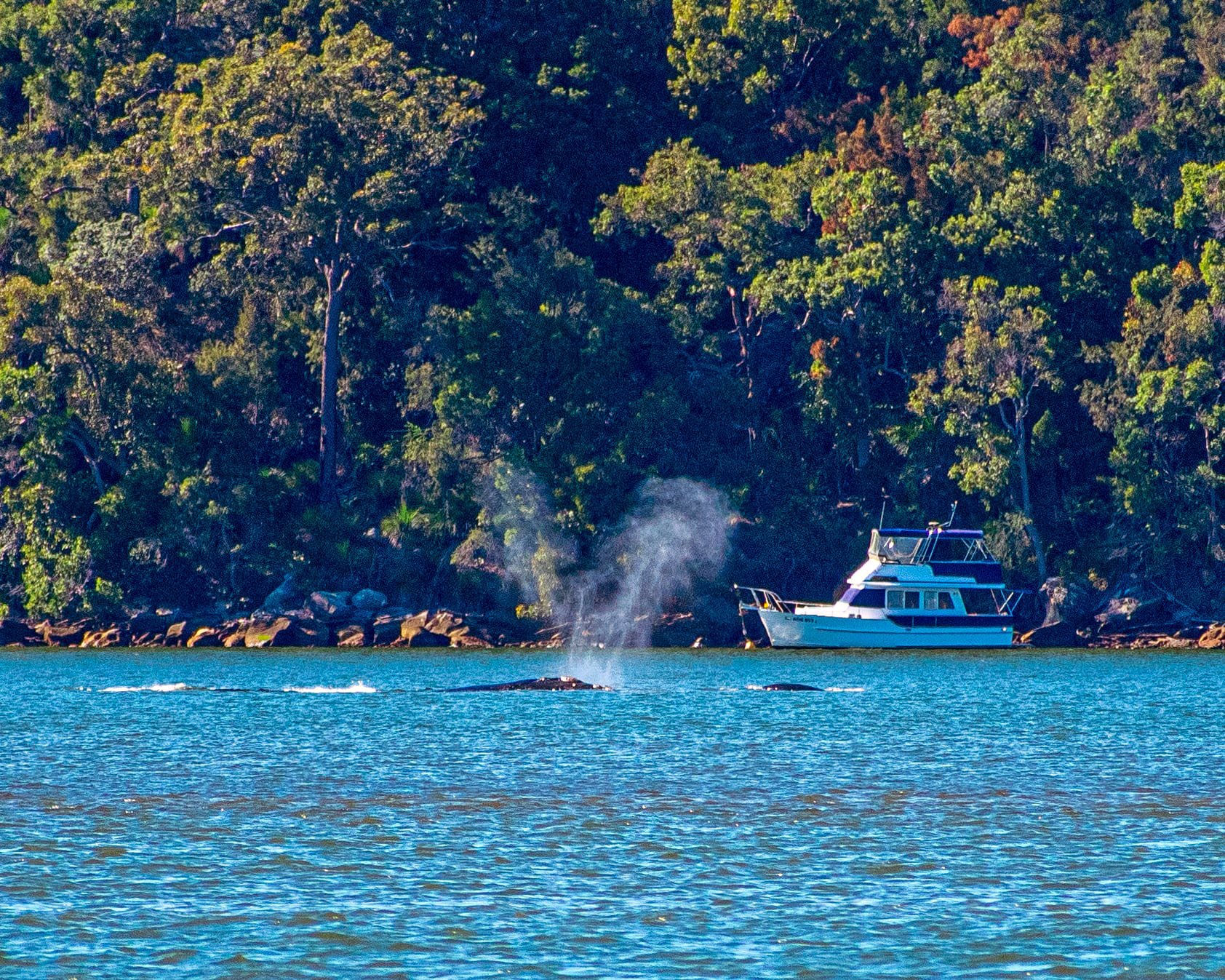
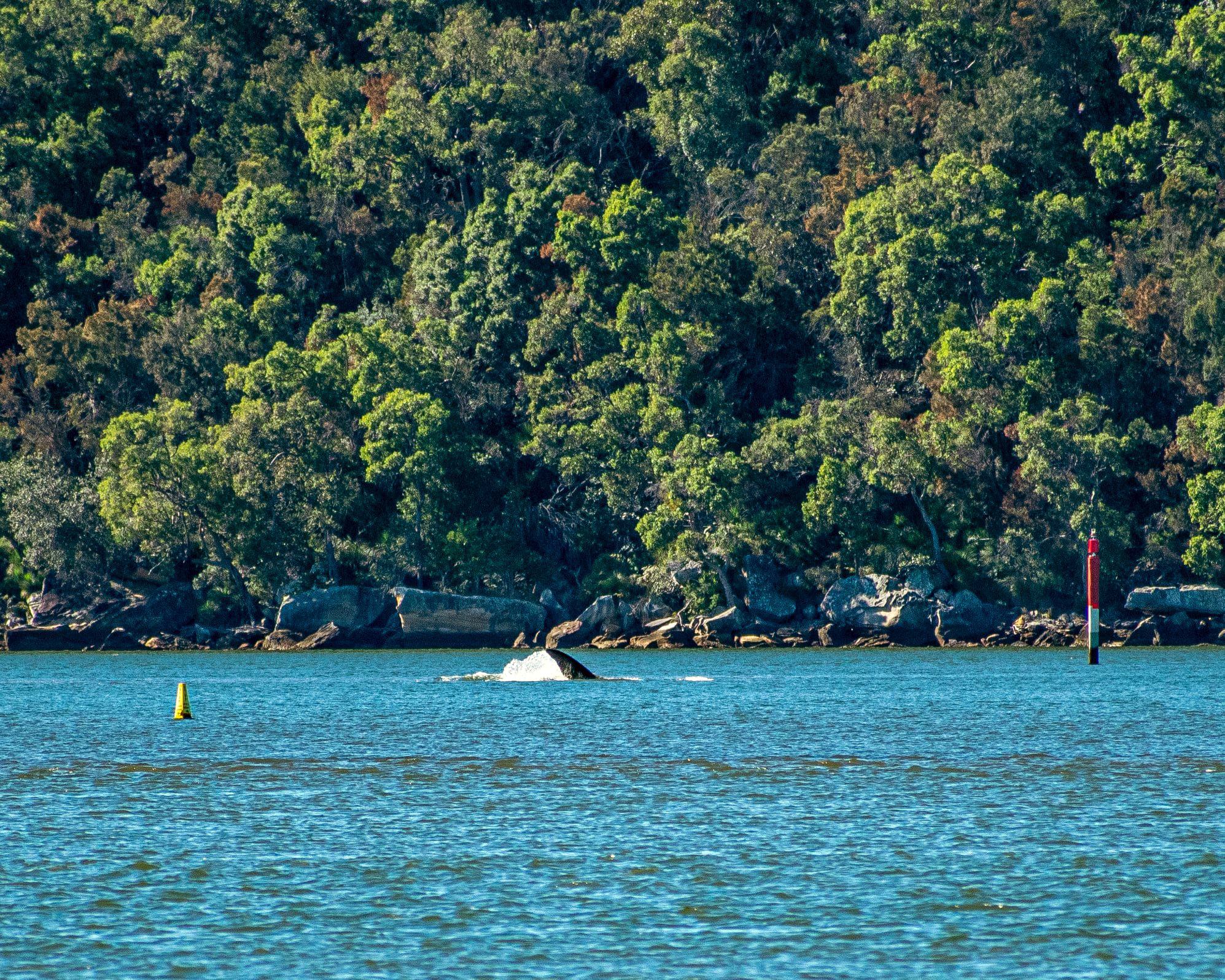
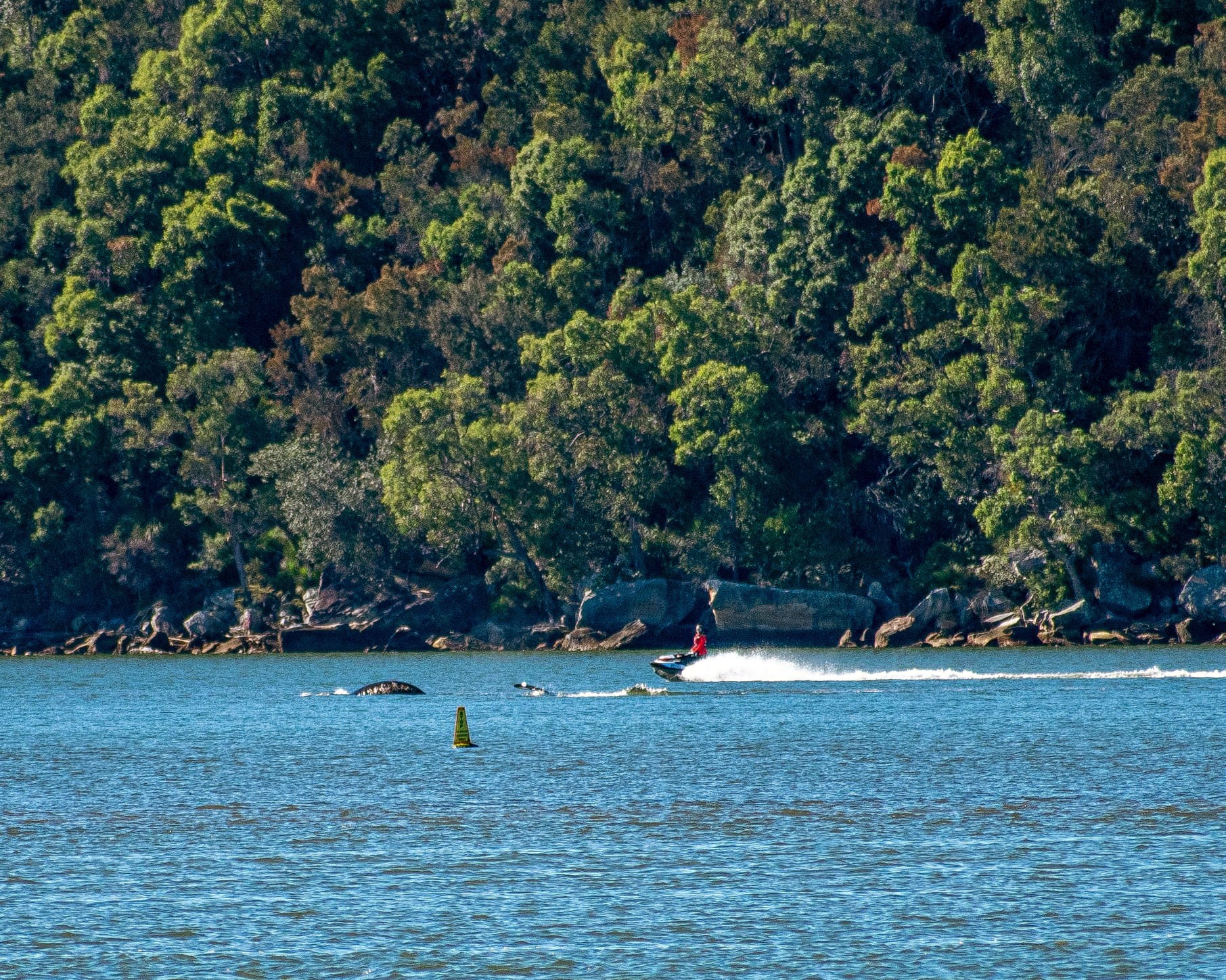
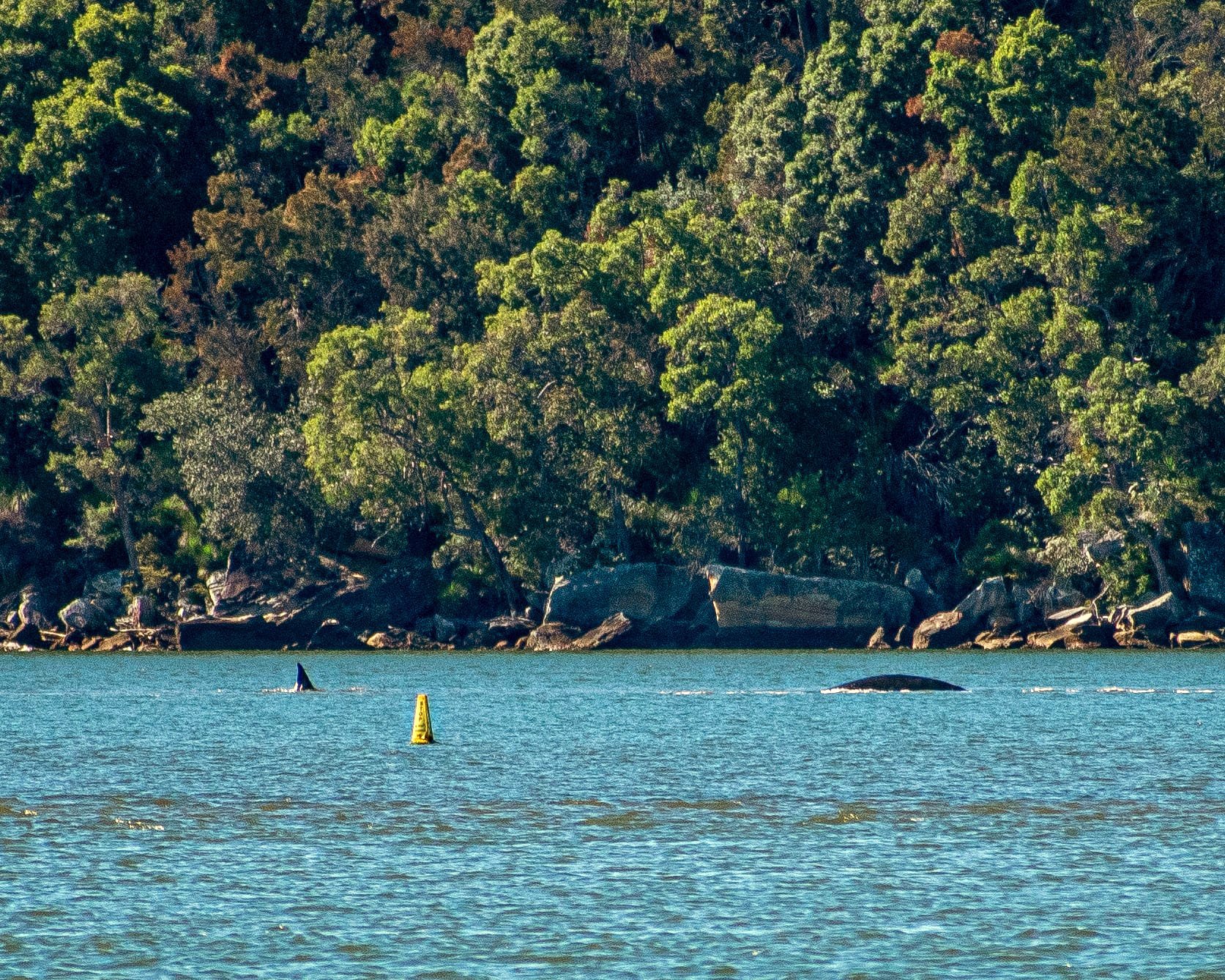
Wildlife In Weird Places
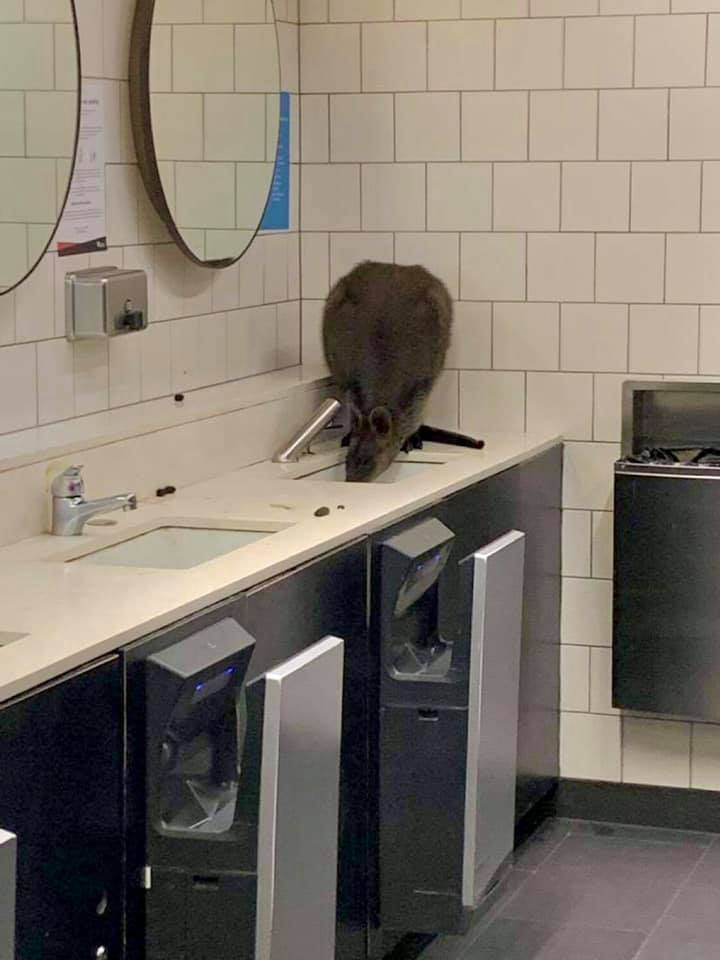
First Leopard Seal Of Season To Come Ashore In NSW
- * Keep at least 40 meters away!
- * Never block a seals path into the water.
- * They are apex predators and can be very dangerous!
- * Keep dogs and children well away from seals.
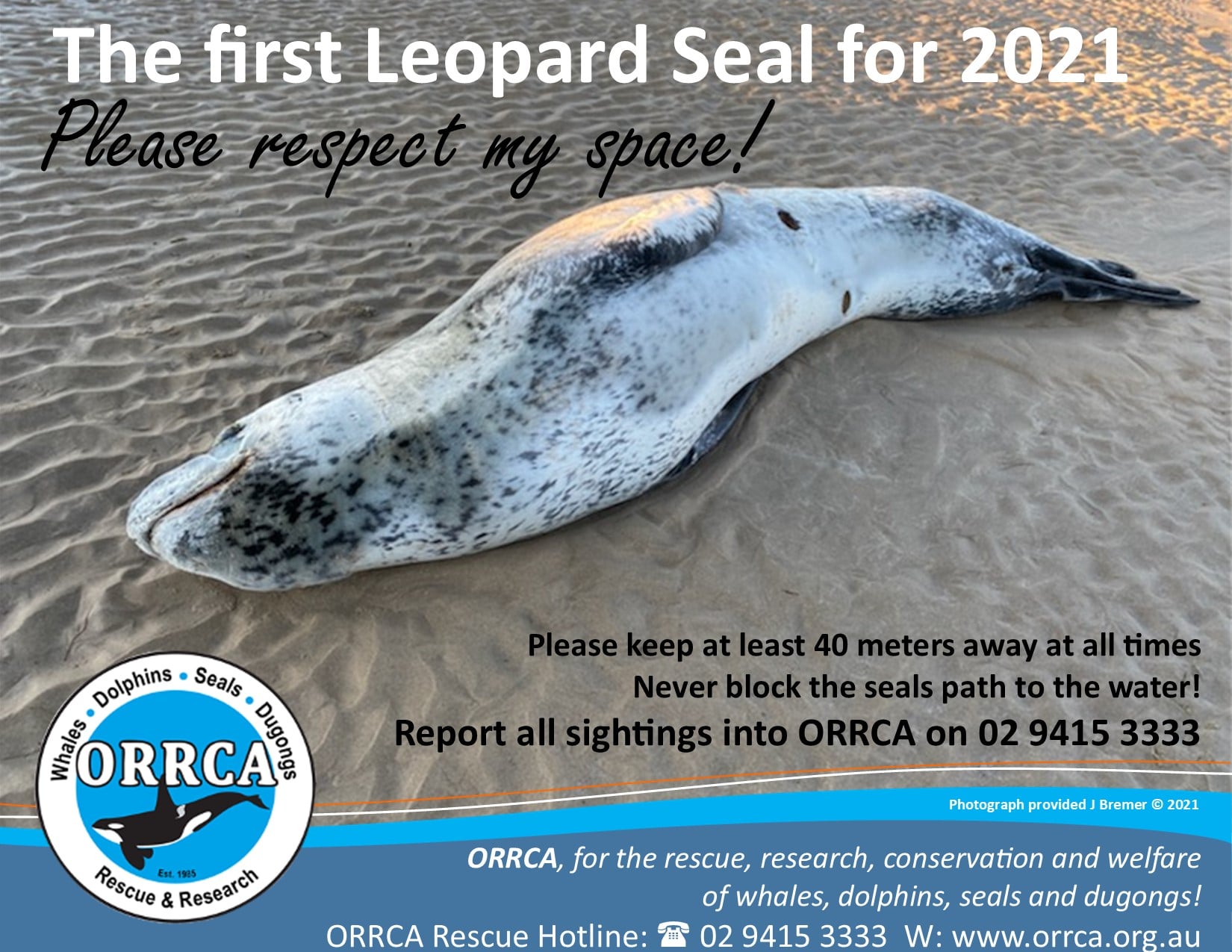
The Heat Is On Australia To Act On Climate Following World Heritage Great Barrier Reef Decision
NSW Government Future Of Gas Statement Delivers Clarity On PELs And Land Use
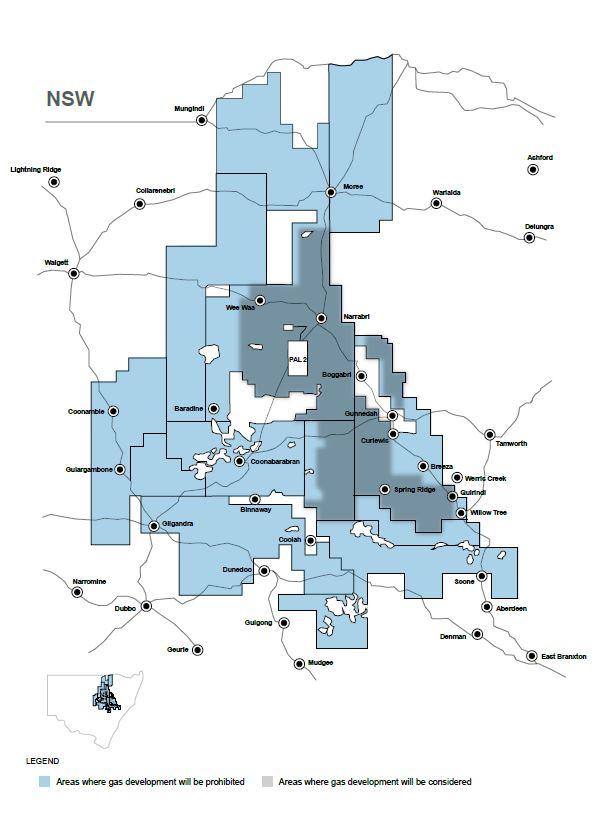
Farmers React To Coal Seam Gas Statement For Western NSW
Developers To Gain More Say Under Proposed Planning Policy
Design And Place SEPP
New Electricity Consumer Trustee To Put Energy Consumers First
- overseeing coordinated planning and investment in electricity generation, storage and transmission over time in New South Wales
- authorising electricity network infrastructure projects
- administering tenders to identify the best generation and storage projects for consumers
- designing long term energy service agreements to encourage new generation and storage investment.
Santos Plan To Dump Untreated Wastewater In Critically Endangered White Throated Snapping Turtle And Vulnerable Fitzroy River Turtle Habitat Vetoed
.jpg?timestamp=1627003332270)
Echidna Breeding Season Commences
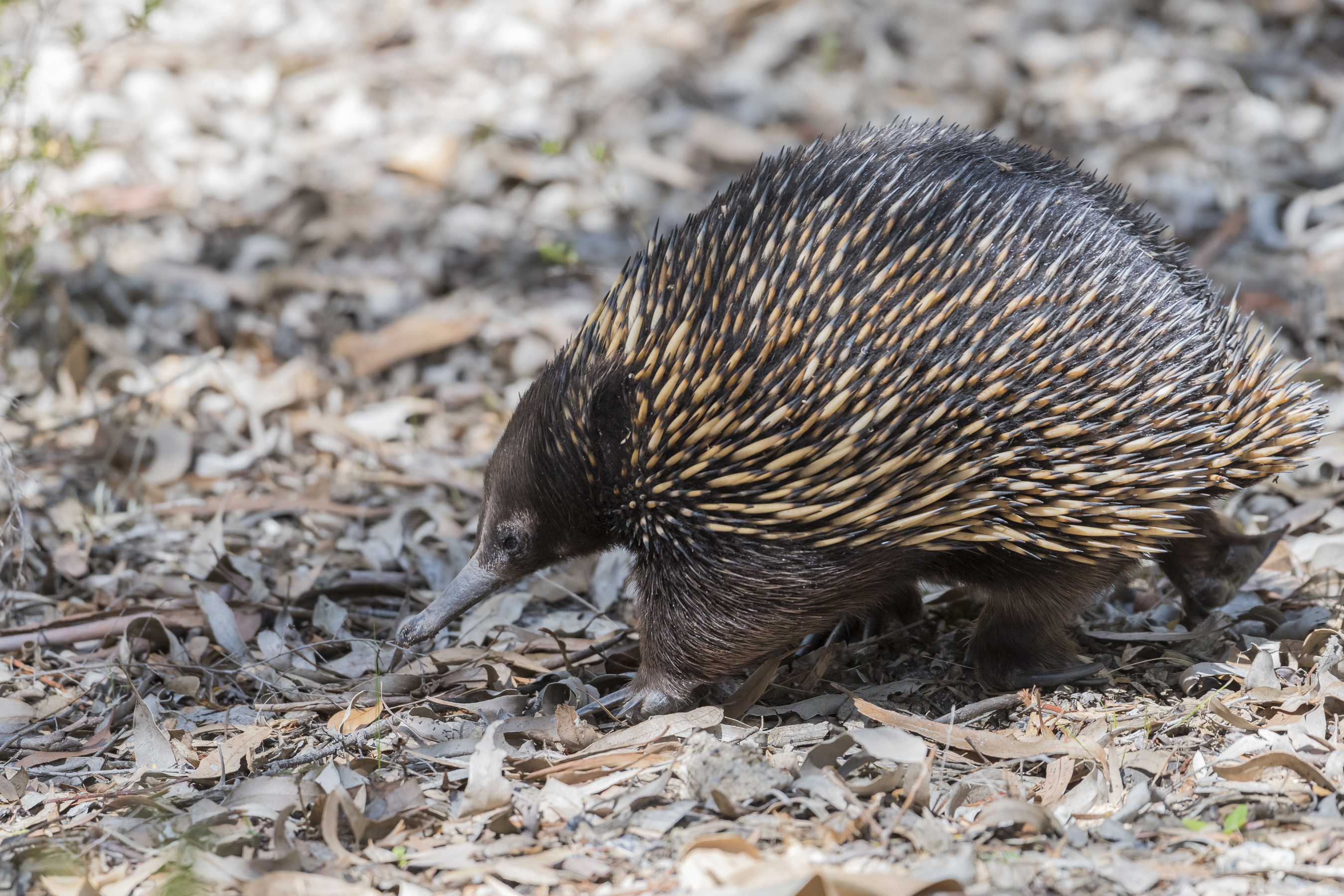
Plan To Dump Rig Near Ningaloo May Breach Law
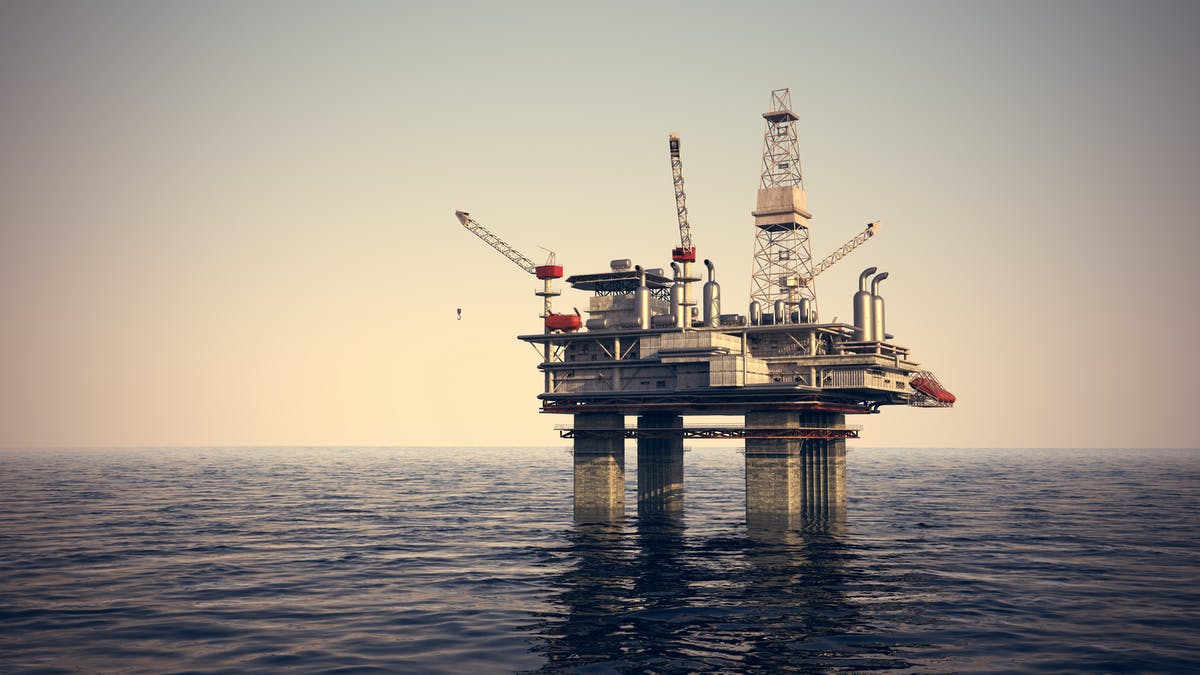
Draft National Recovery Plan For The Koala (Combined Populations Of Queensland, New South Wales And The Australian Capital Territory)
Federal Consultation On Endangered Listing For The Koala Now Open - Closes July 30, 2021
Koala Listing Strengthens Call For An Independent Environmental Compliance Agency
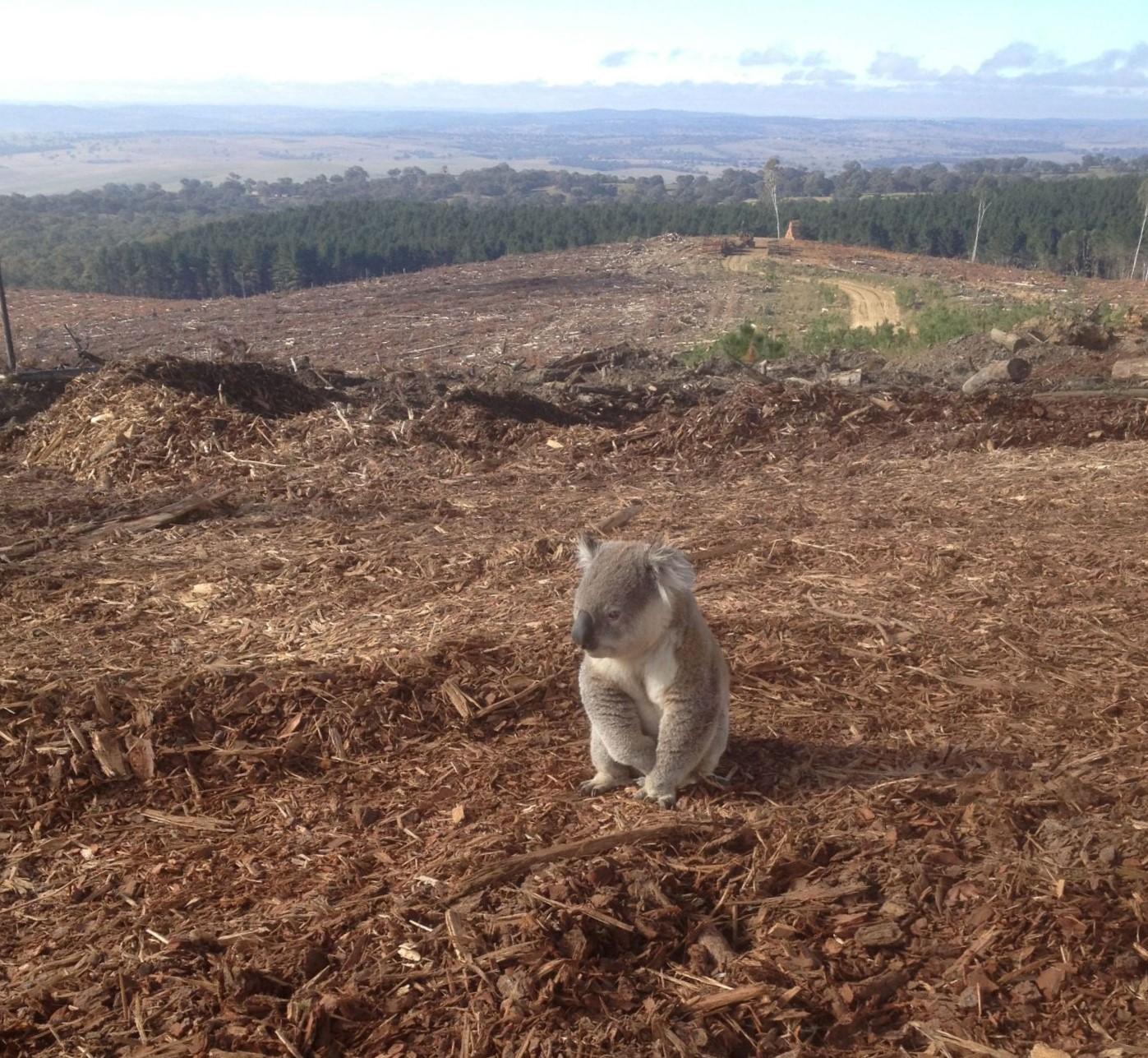
Clever cockatoos in southern Sydney have learned to open curb-side bins — and it has global significance
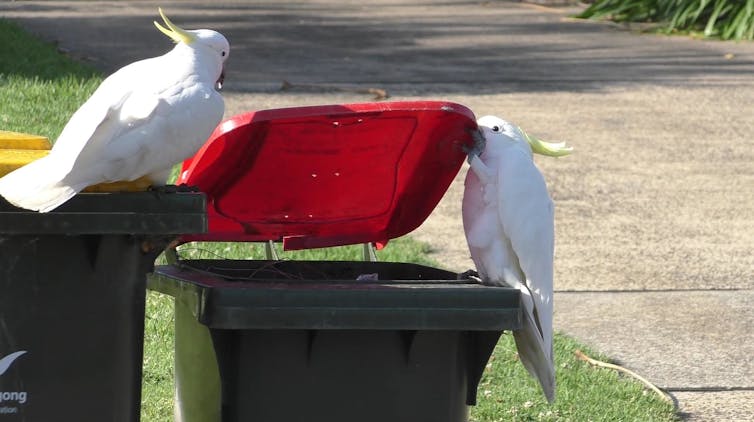
In a small, isolated village in southern Sydney, the local sulphur-crested cockatoos are particularly clever. Once a week, when the neighbours roll their wheelie bins to the curb, cockies fly over and, with skillful dexterity, open the lids in search of food.
It may seem as though cockatoos opening a curb-side bin lid is a simple action. But our research, published today in Science, discovered this behaviour is far more significant than you may have first thought.
Sulphur-crested cockatoos are copycats. After one solves the lid-flip puzzle, other birds nearby imitate the new foraging behaviour in a stunning display of “social learning”.
For decades, scientists believed humans were the only animals capable of culture. Now, thanks to the community’s observations, we can add parrots to this small (but growing) list, which also includes chimpanzees, humpback whales and New Caledonian crows.
Clever, Mischievous Cockies
In Australia, sulphur-crested cockatoos (Cacatua galerita) are often thought of as being in your face, full of attitude and mischief. But if we take the time to observe them, we can see they’re also intelligent, curious and adaptable.
You might have seen a variety of their social interactions, such as play. Have you watched cockies hanging on powerlines like a trapeze artist?
Cockatoos are also highly dexterous, holding food with their foot and manipulating it with their beak and tongue. This includes skillfully eating the seeds from a gardener’s mortal enemy — the bindii weed — and lessor foes, such as onion grass.
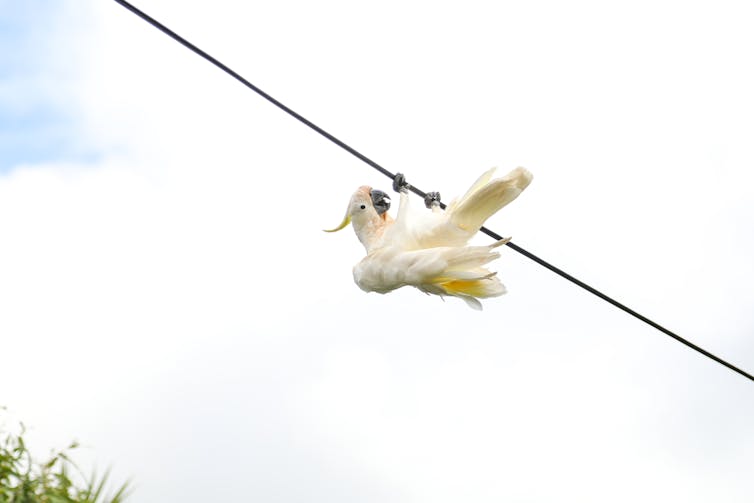
But bin opening is a new foraging behaviour that hadn’t been observed until recently. Thankfully, one member of our research team lives in the local area, and saw cockatoos opening bins firsthand in 2014.
This kicked off our bin-opening survey in 2018, where we asked community members to report if they “have” and, importantly, “have not” observed bin opening across the greater Sydney region and beyond.
Thanks to these reports and our own observations, we soon discovered this behaviour spread to neighbouring suburbs over the following years.
Read more: Don't disturb the cockatoos on your lawn, they're probably doing all your weeding for free
We also found that between suburbs, where the birds’ social networks were separated, there were subtle differences in bin-opening styles, and these became increasingly different between suburbs further apart.
Only around 10% of birds in each flock learned how to open bins. The rest benefit from the behaviours of these pioneers. Interestingly, we found adult males were most likely to know how to open bins. Adult females and juveniles also displayed this behaviour, but to a lesser extent.
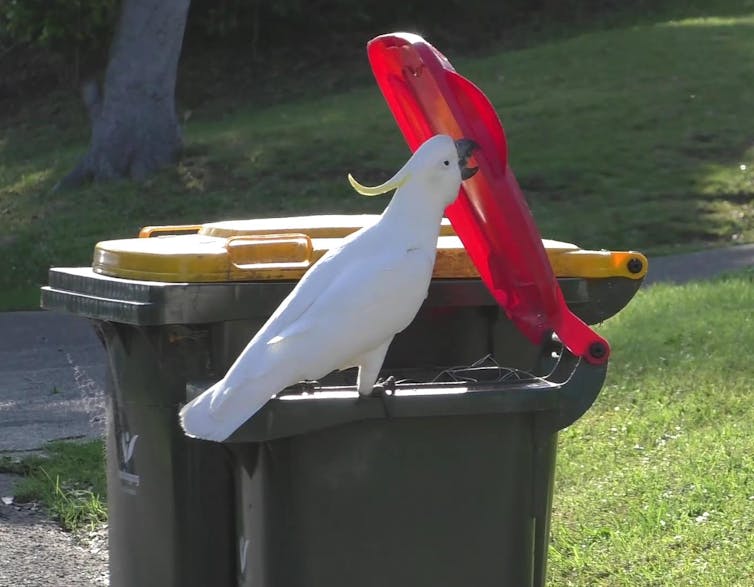
What’s All The Fuss About, Anyway?
To many of us familiar with the cleverness of cockatoos, it might come as no surprise they can learn by watching each other. So in case you aren’t as fascinated as we are by this discovery, here are a couple of reasons to get excited.
First, it shows we can all make interesting scientific observations in our everyday lives — even in the suburbs where we live.
Second, only 70 odd years ago, humans started questioning the idea only human society was culturally complex. Humans are masters of social learning. From an early age, we copy skills from other children and adults.
But this study helps reaffirm that a range of other animals are also culturally complex.
Read more: Birds that play with others have the biggest brains - and the same may go for humans
There are three main traits associated with so-called “cultural animals”: larger brain size, living in social groups, and being long lived. This is known to scientists as the “cultural intelligence hypothesis”.
And when lands change, for example, for urban growth or agriculture, it stimulates the emergence and spread of adaptive behaviours. This creates new opportunities for cultures to develop.
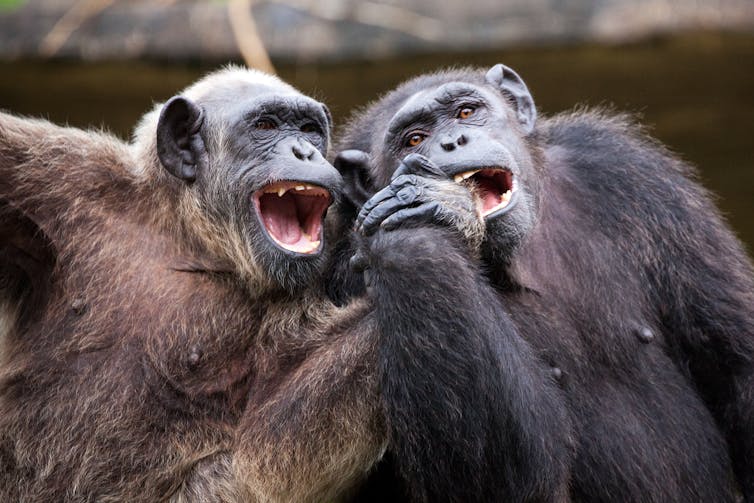
Cities and urban areas provide fertile grounds for this, as animals that live there often have to change their behaviours to exploit different foods and shelter options, and to survive new threats — think cats, rats, and cars.
It’s likely most of us have observed animals adapting to new environments. A classic example from Sydney is the bin-chicken — aka Australian white ibis. These birds also forage in bins (but not opening the lids) and now nest in urban palm trees rather than their traditional flooded wetland reed beds.
Another fascinating example is grey-headed flying-foxes. Despite being vulnerable to extinction due to population decline and habitat loss, these bats have become more common in urban areas over recent decades. This has required adaptation to lights, noise, humans, and the different flowers and fruits we grow in our gardens, parks and streets.
Adaptive behaviours like these are assumed to be the result of genetic change, or innovations. The challenge is to confirm if these innovations spread via social learning through the population, resulting in new, adaptive cultures emerging.
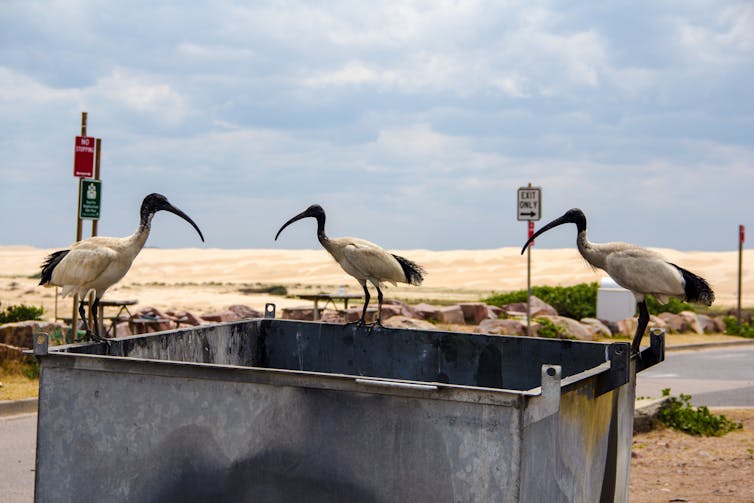
How You Can Make A Difference
Cities are also full of people who can share observations of innovative behaviours, and we encourage you to get involved in citizen science.
A major benefit of community participation in science is increased geographic coverage in a short amount of time. Individual scientists can only survey a small number of sites, but by involving the community, we can cover large parts of a suburb, city, or a country at the same time.
There are dedicated citizen science projects you can participate in, such as our Big City Birds research. We use this app to learn about nesting, foraging, nocturnal roosts, and adaptive behaviours of birds across Australia (and not just in the big cities).
Read more: Birdwatching increased tenfold last lockdown. Don't stop, it's a huge help for bushfire recovery
Other recommended projects include eBird, iNaturalist, DigiVol, FrogID, and Urban Field Naturalist. It even helps to share any interesting observations through social media, an indirect way to inform scientific research. To help us, you can tag @Big_City_Birds or use this hashtag: #BigCityBirds.
With a range of similar studies underway, it’s likely scientists will discover more evidence of culturally complex behaviours in other species, continuing to challenge our idea of what it means to be human.![]()
John Martin, Adjunct lecturer, University of Sydney; Barbara Klump, Researcher, Max Planck Institute of Animal Behavior, and Lucy Aplin, Research Group Leader, University of Konstanz
This article is republished from The Conversation under a Creative Commons license. Read the original article.
‘What country have you walked?’ Why all Australians should walk an Indigenous heritage trail
Stephen Muecke, Flinders UniversityAboriginal and Torres Strait Islander readers are advised this article contains images and names of deceased people.
The Goolarabooloo community in Broome has been running the Lurujarri Heritage Trail for over 30 years. In July each year, tourists are welcomed by the Roe family, and embark on an eight-day trek.
Swags and tents are piled on the truck, so the walkers only have to carry a day pack. They soon pass the famous Cable Beach where less adventurous tourists are basking in the sun, and continue their walk along the beach admiring the contrast of aquamarine ocean and red pindan cliffs.
On trail, the colonial power dynamic between settler and Indigenous communities is turned on its head. The Goolarabooloo express their sovereignty (never ceded) by welcoming visitors onto their Country.
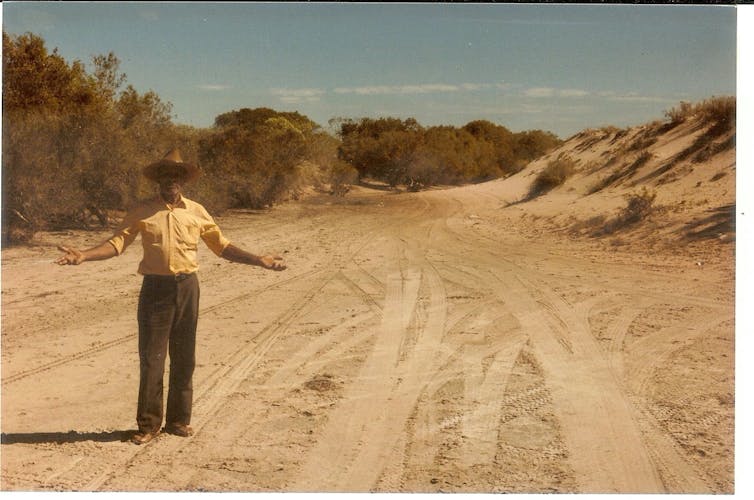
This kind of tourism is a rare, life-changing experience. What is special about the Lurujarri Trail is the participation of the Roe family. “Over eight days, we become friends,” tour leader Daniel Roe tells the group.
Trailblazing
It was Daniel’s late great-grandfather, Paddy Roe, who had the idea for the trail in 1987. I had written a couple of books with him, and we were working on a third at the time, which I have only just delivered on: The Children’s Country.
He wanted the text to document and protect Country from developers and miners. But it turned out the trail was a better idea. When Woodside Energy and the Western Australian government wanted to build a huge gas hub in the middle of the trail, at Walmadany, James Price Point, over ten years ago, it was the Goolarabooloo that stood in the way, and eventually won the battle.
Hundreds of people had walked the trail over the years and some came back to help in the campaign. They had developed a kind of gut feeling for Country the Goolarabooloo call liyan.
Read more: Without James Price Point, what now for Browse Basin gas?
Extractive Industries
White Europeans only arrived in West Kimberley at the end of the 19th century, so elders like Paddy Roe, who lived from about 1912 to 2001, saw their arrival unfold.
In recent years, stark divisions over mining money have emerged in the Aboriginal community and Native Title determinations have exacerbated the divisions. The Goolarabooloo did not get any Native Title rights, as their neighbours did. Some speculate their opposition to the gas had a lot to do with it.
In a sense, the walking trail is land rights by other means. They are maintaining their knowledge and passing it on.
Dreaming stories (called bugarrigarra, the law) connect communities and follow old trade routes, down through the Western Desert via Uluru into southern parts, where the local pearl-shell used to be be traded for ochre, native tobacco or new song cycles.
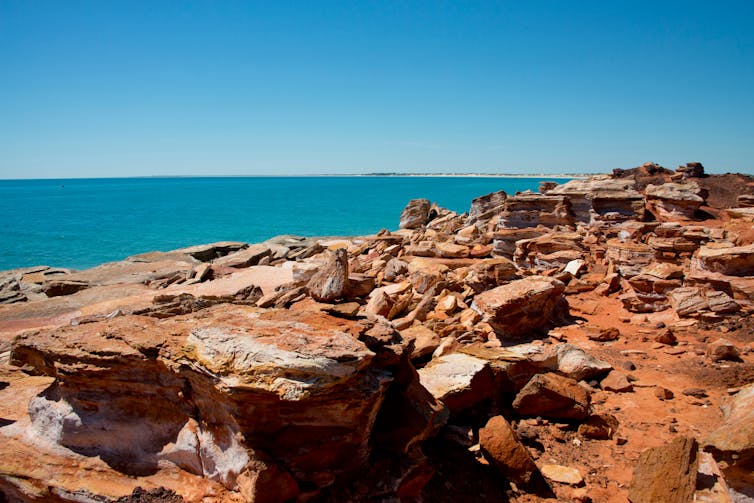
Read more: Songlines: Tracking the Seven Sisters is a must-visit exhibition for all Australians
There are dozens of Aboriginal walking tracks across Australia: well-known are the Larapinta in Central Australia, the Bundian Way between Targangal (Kosciuszko) and Bilgalera on the coast near Eden, and Mungo Aboriginal Discovery Tours.
But it is hard to find another with the Lurujarri Heritage Trail’s family involvement, ocean swimming, bush tucker, and the most extensive set of dinosaur footprints in Australia.
More Indigenous-led walking tracks could trace storied landmarks.
In Kaurna Country around Adelaide, there is the story of Tjilbruke. This ancestor was a law man whose nephew Kulultuwi was hunting emu that were forbidden to him.
Tjilbruke was prepared to overlook the transgression, but Kulultuwi’s half-brothers speared him. Tjilbruke, in mourning, carried the body of his nephew down the coast, stopping to weep at various points where there are now freshwater springs.
Read more: Friday essay: this grandmother tree connects me to Country. I cried when I saw her burned
Walking Schools
There is increasing awareness of how Indigenous knowledges are relevant to caring for Country.
“Things must go both ways,” Paddy Roe used to say to me.
He had already experienced practices that saw knowledge transfer going one way. People would ask him about his Country in order to exploit it, for water, for pasture, for pearl-shells and now for gas and oil.
Walking tracks can teach what each territory is capable of sustaining. The people further down the track know their Country is that little bit different and what it is capable of. These pathways connect up, and knowledge transforms along the way.
People often ask, “What school did you go to?” Perhaps one day, in Australia, they will ask, “what Country have you walked?”![]()
Stephen Muecke, Professor of Writing, Flinders University
This article is republished from The Conversation under a Creative Commons license. Read the original article.
If you see something, say something: why scientists need your help to spot blue whales off Australia’s east coast
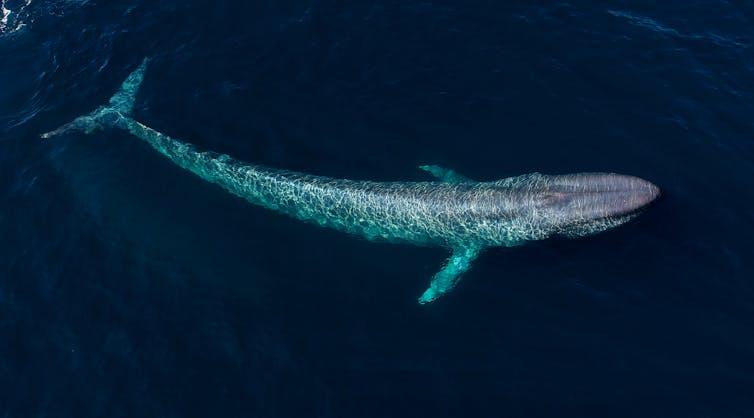
Blue whales, the largest animals to ever live, are surprisingly elusive.
They’re bigger than the biggest dinosaur ever was, capable of growing over 30 metres long and can weigh over 100 tonnes — almost as long as a 737 plane and as heavy as 40 elephants. They also have one of the loudest voices, and can talk to each other hundreds of kilometres across the sea.
Why, then, are they so difficult to find in some parts off Australia?
My new research paper recorded only six verified sightings of the pygmy blue whale off Sydney in the last 18 years. Two of these occurred just last year. This blue whale subspecies is known to mostly occur along Australia’s west coast.
Rare sightings like these are important because pygmy blue whales are a “data deficient” animal. Every opportunity we have to learn about them is crucial to help us better protect them.
Blue Whales Down Under
Don’t let its name fool you, the pygmy blue whale can still grow shockingly large, up to 24 metres in length. It’s one of two blue whale subspecies that occur in Australian waters – the other being the Antarctic blue whale, the biggest whale of them all at around 33 metres long.
Unfortunately, historical whaling hunted blue whales to near extinction in the Southern Ocean. The Antarctic blue whale was depleted to only a few hundred individuals and, while they’re slowly bouncing back, they’re still listed as critically endangered by the International Union for the Conservation of Nature (IUCN).
In contrast, we know little about pre- and post-whaling numbers for pygmy blue whales. Their listing as a data deficient species by the IUCN means we don’t have a full understanding of their population status.
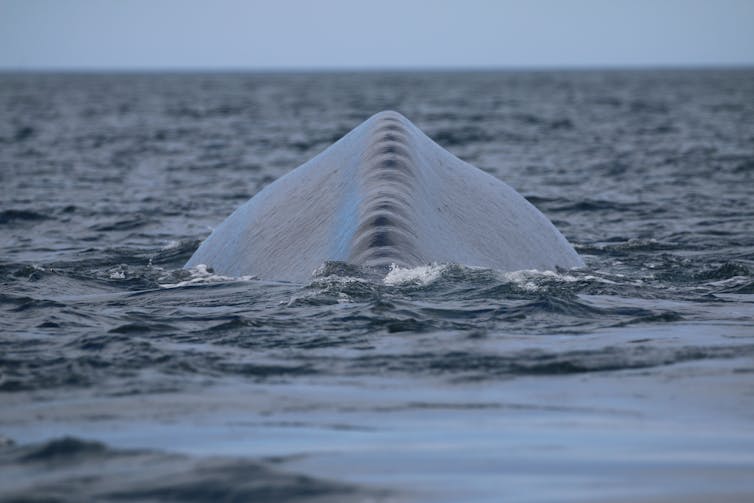
One reason may be because blue whales are logistically challenging to study. For example, blue whales don’t just hang around in one area all the time. They’re capable of swimming thousands of kilometres for food and to breed.
They can also hold their breath for up to 90 minutes underwater, which can make them hard to spot unless they’re near the surface. To see them, people need to be in the right place at the right time.
This may require scientists to be on dedicated research vessels or in a plane to spot them, which can be expensive and weather-dependent.
Read more: I measure whales with drones to find out if they're fat enough to breed
This also makes learning about them much harder compared to other, more accessible species, such as coastal bottlenose dolphins.
To learn more about pygmy blue whales in Australia, marine scientists have developed a variety of techniques, including listening to whales talking, taking skin samples and satellite tagging.
While this work is useful, it has focused mainly in areas where pygmy blue whales are known to occur, such as southern and western Australian waters.
Pygmy blue whales are known to feed in the Perth Canyon, Western Australia, and between the Great Australian Bight and Bass Strait during summer. They most likely breed in the Indian and western Pacific Oceans during winter.
But we don’t know much about pygmy blue whale presence in other parts of Australian waters, such as the east coast.
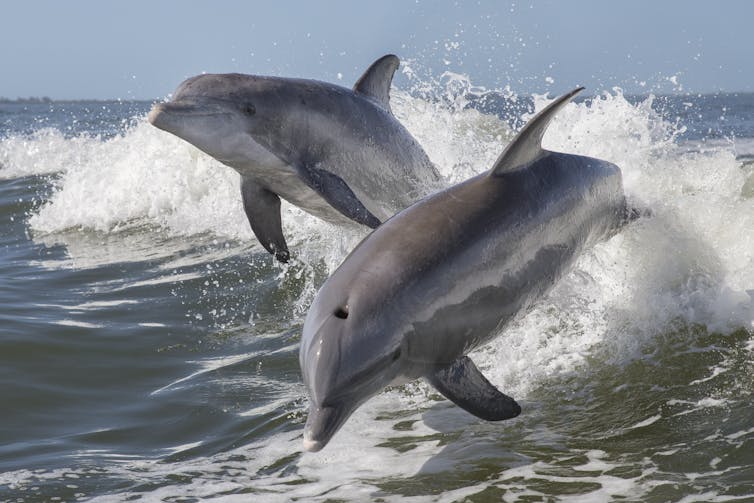
How Can We Conserve A Species We Know Very Little About?
Well, it can be tricky. The more information we know, the better we’re placed to assess their conservation needs. But focusing our efforts on species we know nothing about may require a conservative approach until we learn more.
Some would argue it’s better to protect a species we know needs our conservation dollar before spending precious resources on something uncertain.
Read more: Curious kids: do whales fart and sneeze?
Fortunately, Australia has some of the world’s best protection policies for marine mammals, including whales. This means a precautionary approach is already in place to protect these creatures.
Since blue whales are listed as a threatened species, they’re protected under Australia’s primary environment law, the Environmental Protection and Biodiversity Conservation (EPBC) Act.
And on an international level, Australia is a signatory to the International Whaling Commission (the global body for whale conservation) and the Convention on International Trade of Endangered Species (which ensures wildlife trade doesn’t threaten endangered species).
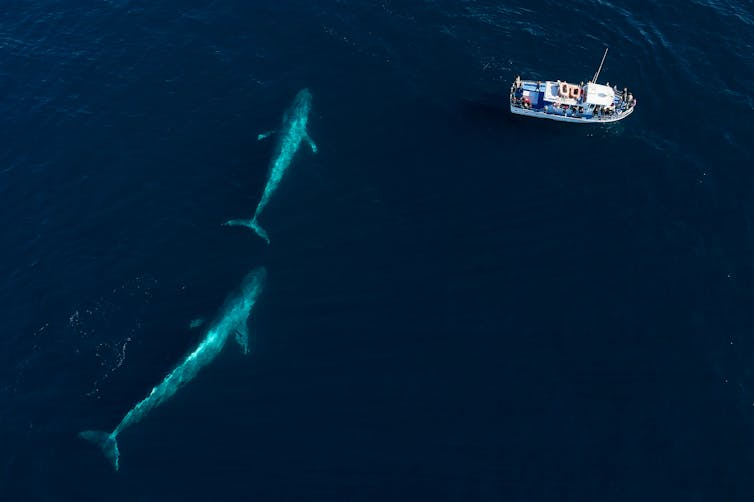
To help uphold this international and national protection, scientists must continue to learn more about data-deficient animals like the pygmy blue whale to help safeguard against known and future threats.
This includes collisions with ships, overfishing, entanglement with fishing gear, increased human activity in the ocean, and climate change, which may affect when and where whales occur.
We Need Extra Eyes
There are more than 14,600 animal species listed as data deficient by the IUCN.
Some, like the pygmy blue whale, are poorly studied. One reason is because they’re cryptic or boat shy, such as the Australian snubfin dolphin.
Or, they might be tricky to see, such as the false killer whale, whose sightings remain irregular in Australian coastal waters. Opportunities to learn more about them occur when they become stranded.
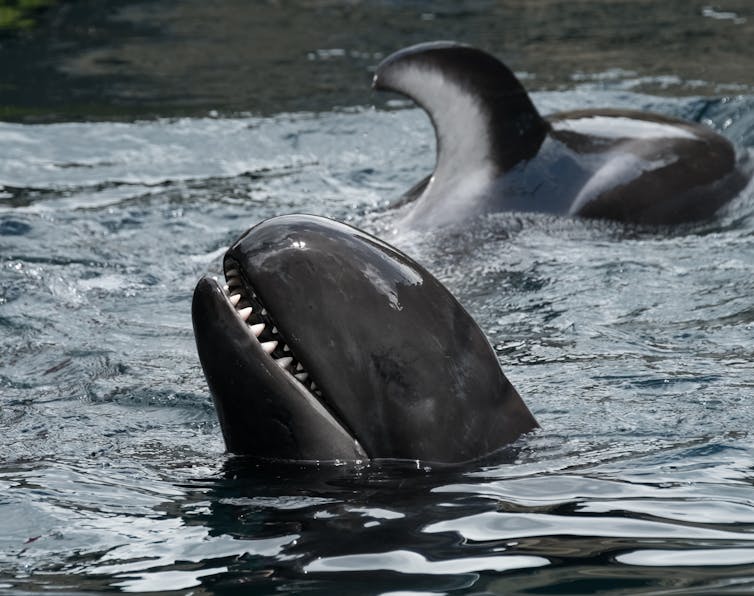
So while citizen science sightings of pygmy blue whales may be rare off the Australian east coast, they do help contribute to our understanding of their distribution in Australian waters.
The two sightings of pygmy blue whales off Maroubra, Sydney, last year were within two months of each other. This was thanks to drones (flown under state rules).
Read more: Climate change threatens Antarctic krill and the sea life that depends on it
This prompted my research review of blue whale sightings off Sydney, which found citizen scientists made similar sightings in 2002 – the first official sighting from land off Sydney — and between 2012-14.
We don’t know exactly what type of pygmy blue whales these are (three distinct groups are recognised: the Indo-Australian, New Zealand and Madagascar groups). However, whale calls detected along Australia’s east coast in previous years suggest they’re most likely New Zealand pygmy blue whales, and they could have been heading to breeding waters north of Tonga.
So, the next time you are by the sea, keep a look out and tell a scientist via social media if you see something interesting. You just never know when the world’s biggest, or shiest, animal may turn up out of the blue.
Vanessa Pirotta, Wildlife scientist, Macquarie University
This article is republished from The Conversation under a Creative Commons license. Read the original article.
Wind turbines off the coast could help Australia become an energy superpower, research finds
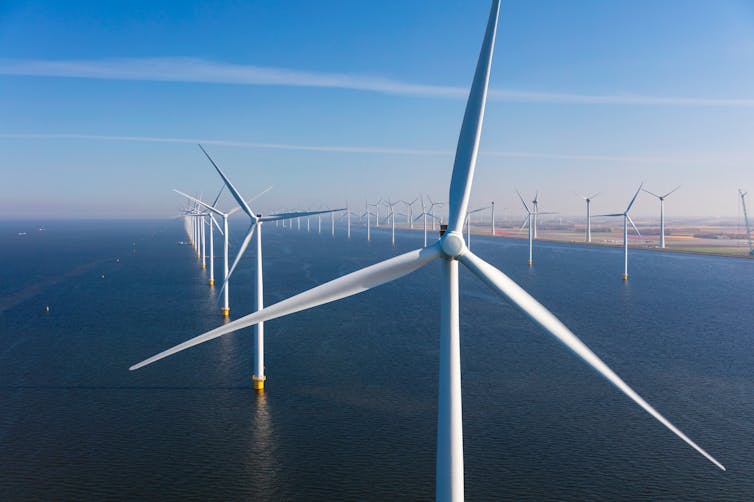
Offshore wind farms are an increasingly common sight overseas. But Australia has neglected the technology, despite the ample wind gusts buffeting much of our coastline.
New research released today confirms Australia’s offshore wind resources offer vast potential both for electricity generation and new jobs. In fact, wind conditions off southern Australia rival those in the North Sea, between Britain and Europe, where the offshore wind industry is well established.
More than ten offshore wind farms are currently proposed for Australia. If built, their combined capacity would be greater than all coal-fired power plants in the nation.
Offshore wind projects can provide a win-win-win for Australia: creating jobs for displaced fossil fuel workers, replacing energy supplies lost when coal plants close, and helping Australia become a renewable energy superpower.
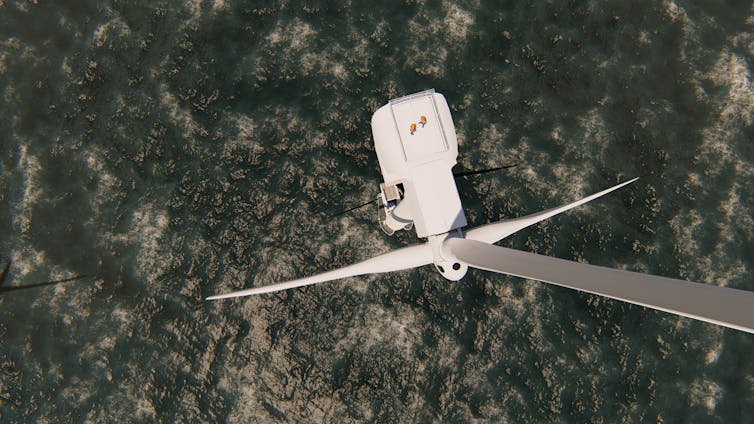
The Time Is Now
Globally, offshore wind is booming. The United Kingdom plans to quadruple offshore wind capacity to 40 gigawatts (GW) by 2030 – enough to power every home in the nation. Other jurisdictions also have ambitious 2030 offshore wind targets including the European Union (60GW), the United States (30GW), South Korea (12GW) and Japan (10GW).
Australia’s coastal waters are relatively deep, which limits the scope to fix offshore wind turbines to the bottom of the ocean. This, combined with Australia’s ample onshore wind and solar energy resources, means offshore wind has been overlooked in Australia’s energy system planning.
But recent changes are producing new opportunities for Australia. The development of larger turbines has created economies of scale which reduce technology costs. And floating turbine foundations, which can operate in very deep waters, open access to more windy offshore locations.
More than ten offshore wind projects are proposed in Australia. Star of the South, to be built off Gippsland in Victoria, is the most advanced. Others include those off Western Australia, Tasmania and Victoria.
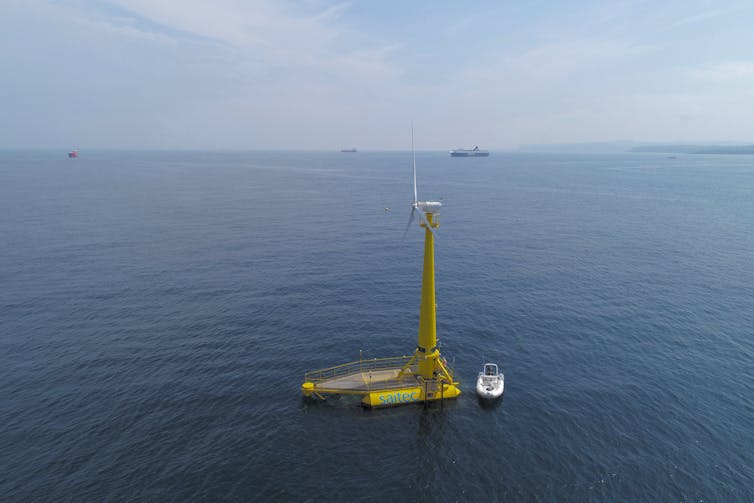
Our Findings
Our study sought to examine the potential of offshore wind energy for Australia.
First, we examined locations considered feasible for offshore wind projects, namely those that were:
- less than 100km from shore
- within 100km of substations and transmission lines (excluding environmentally restricted areas)
- in water depths less than 1,000 metres.
Wind resources at those locations totalled 2,233GW of capacity and would generate far more than current and projected electricity demand across Australia.
Second, we looked at so-called “capacity factor” – the ratio between the energy an offshore wind turbine would generate with the winds available at a location, relative to the turbine’s potential maximum output.
The best sites were south of Tasmania, with a capacity factor of 80%. The next-best sites were in Bass Strait and off Western Australia and North Queensland (55%), followed by South Australia and New South Wales (45%). By comparison, the capacity factor of onshore wind turbines is generally 35–45%.
Average annual wind speeds in Bass Strait, around Tasmania and along the mainland’s southwest coast equal those in the North Sea, where offshore wind is an established industry. Wind conditions in southern Australia are also more favourable than in the East China and Yellow seas, which are growth regions for commercial wind farms.
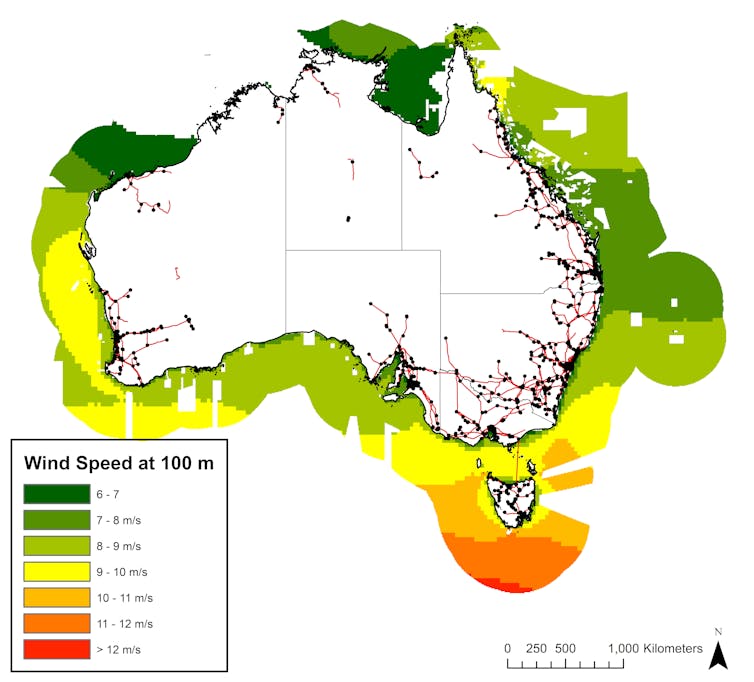
Next, we compared offshore wind resources on an hourly basis against the output of onshore solar and wind farms at 12 locations around Australia.
At most sites, offshore wind continued to operate at high capacity during periods when onshore wind and solar generation output was low. For example, meteorological data shows offshore wind at the Star of the South location is particularly strong on hot days when energy demand is high.
Australia’s fleet of coal-fired power plants is ageing, and the exact date each facility will retire is uncertain. This creates risks of disruption to energy supplies, however offshore wind power could help mitigate this. A single offshore wind project can be up to five times the size of an onshore wind project.
Some of the best sites for offshore winds are located near the Latrobe Valley in Victoria and the Hunter Valley in NSW. Those regions boast strong electricity grid infrastructure built around coal plants, and offshore wind projects could plug into this via undersea cables.
And building wind energy offshore can also avoid the planning conflicts and community opposition which sometimes affect onshore renewables developments.
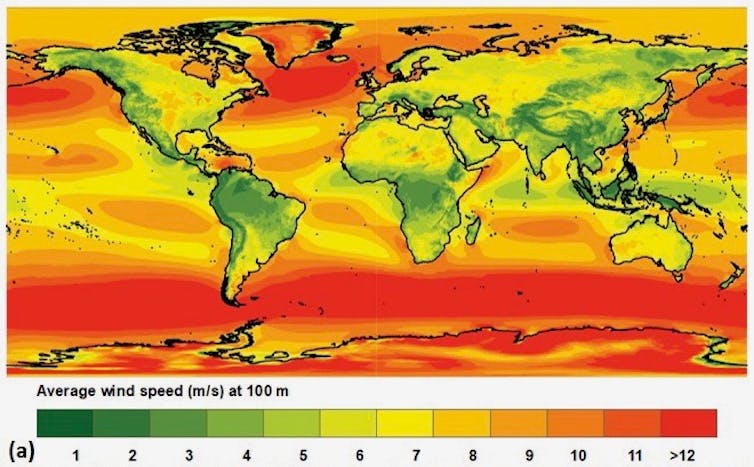
Read more: Renewables need land – and lots of it. That poses tricky questions for regional Australia
Winds Of Change
Our research found offshore wind could help Australia become a renewable energy “superpower”. As Australia seeks to reduce its greenhouse has emissions, sectors such as transport will need increased supplies of renewable energy. Clean energy will also be needed to produce hydrogen for export and to manufacture “green” steel and aluminium.
Offshore wind can also support a “just transition” – in other words, ensure fossil fuel workers and their communities are not left behind in the shift to a low-carbon economy.
Our research found offshore wind could produce around 8,000 jobs under the scenario used in our study – almost as many as those employed in Australia’s offshore oil and gas sector.
Many skills used in the oil and gas industry, such as those in construction, safety and mechanics, overlap with those needed in offshore wind energy. Coal workers could also be re-employed in offshore wind manufacturing, port assembly and engineering.
Realising these opportunities from offshore wind will take time and proactive policy and planning. Our report includes ten recommendations, including:
- establishing a regulatory regime in Commonwealth waters
- integrating offshore wind into energy planning and innovation funding
- further research on the cost-benefits of the sector to ensure Australia meets its commitments to a well managed sustainable ocean economy.
If we get this right, offshore wind can play a crucial role in Australia’s energy transition.
Read more: Super-charged: how Australia's biggest renewables project will change the energy game ![]()
Sven Teske, Research Director, Institute for Sustainable Futures, University of Technology Sydney; Chris Briggs, Research Principal, Institute for Sustainable Futures, University of Technology Sydney; Mark Hemer, Principal Research Scientist, Oceans and Atmosphere, CSIRO; Philip Marsh, Post doctoral researcher, University of Tasmania, and Rusty Langdon, Research Consultant, University of Technology Sydney
This article is republished from The Conversation under a Creative Commons license. Read the original article.
Gas-Fired Recovery Measures: Have Your Say - Closes August 2nd
- unlock supply
- deliver an efficient pipeline and transportation network
- empower gas customers.
- the National Gas Infrastructure Plan (NGIP)
- the Future Gas Infrastructure Investment Framework.
$28 Million Boost To Help Basin Communities
Epicentre Of Major Amazon Droughts And Fires Saw 2.5 Billion Trees And Vines Killed
How Traditional Owners and officials came together to protect a stunning stretch of WA coast
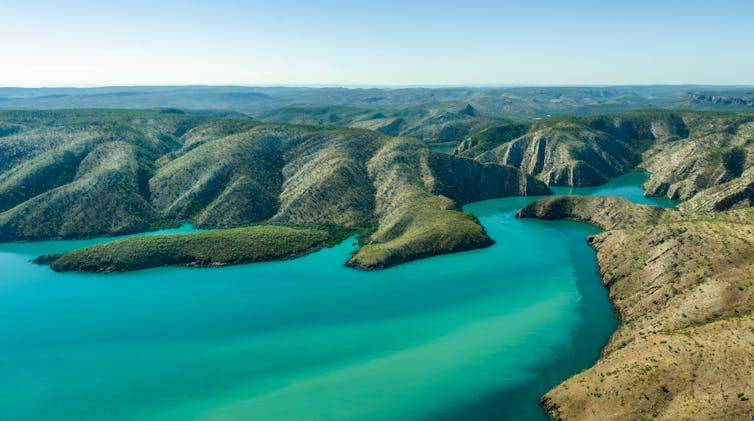
Recent disasters such as the Black Summer bushfires and the Juukan Gorge destruction highlighted the need to put Indigenous people at the centre of decision-making about Australia’s natural places. But what’s the right way to combine traditional ancient wisdom with modern environmental management?
A project off Western Australia’s northwest coast offers a potential way forward. For the first time in the state’s history, Indigenous knowledge has been central to the design of a marine park.
The protected area will span 660,000 hectares northeast of Broome, taking in the stunning Buccaneer Archipelago and Dampier Peninsula. The area comprises thousands of small islands fringed by coral reefs and seagrass beds. The waters support a rich abundance of species such as corals, fish, turtles and dugongs, as well as humpback whales which give birth in the region.
Often, Indigenous input is sought only in the consultation phase of park planning, once maps have been drawn up. But in this case, Traditional Owners co-designed three marine parks with the state government and will jointly manage them. Traditional ecological and cultural wisdom has been embraced and valued, enhancing Western scientific knowledge of a fragile stretch of Australia’s coast.
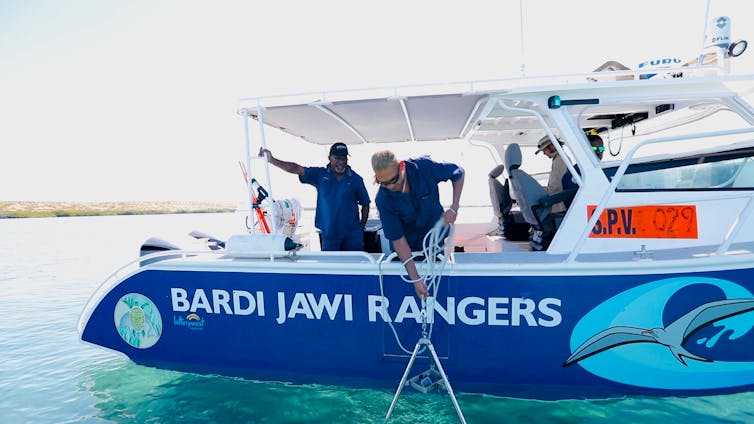
Caring For Sea Country
The marine park co-design is a collaboration between WA’s Department of Biodiversity, Conservation and Attractions and Bardi Jawi, Mayala and Dambeemangarddee Traditional Owners. It will comprise three adjoining protected areas, each jointly managed by a Traditional Owner group.
The Buccaneer Archipelago region has the state’s highest concentration of Traditional Owner communities living adjacent to an existing or proposed marine park.
Local Indigenous people refer to these areas as “Sea Country”. They depend on the waters for food and to carry out traditional practices, and have cared for them sustainably for thousands of years.
But to date, the state’s conservation reserve system has not adequately protected these unique and exceptionally diverse marine ecosystems.
Industry, fishing and tourism are putting pressure on the region’s environment. In particular, the recent sealing of Cape Leveque Road improved access to the Dampier Peninsula and will result in massive increases in tourism and boating.
Adding to this, marine heatwaves and other climate-related changes pose a serious threat to corals, macroalgae and seagrass.
Read more: Why Indigenous knowledge should be an essential part of how we govern the world's oceans

Genuine Two-Way Partnerships
Combining traditional Indigenous knowledge with a Western approach requires methods that are both culturally appropriate and scientifically robust.
In 2018, Bardi Jawi rangers and staff from the Australian Institute of Marine Science carried out “participatory mapping” to design a mornitoring program for corals and fish. The rangers and marine park planners went on to use this method when designing the marine park.
Participatory mapping starts with Traditional Owners and marine park planners documenting the traditional owners’ ecological knowledge, cultural values and aspirations. From this, maps are developed then built on via on-Country observations.
This process allows scientists to record and understand traditional knowledge of an environment in a way that is also useful for Western conservation and management planning.
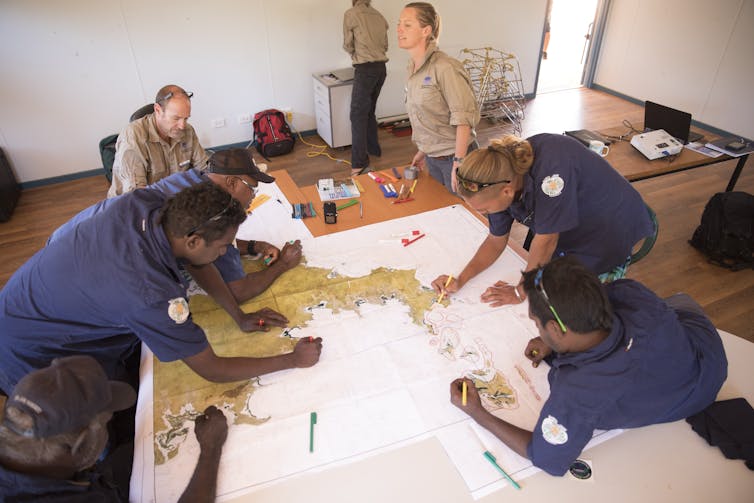
The co-design approach was built on genuine partnerships, mutual respect and two-way learning. The partnerships developed over several years through other joint projects by scientists and Bardi Jawi rangers.
The department listened to and implemented this strong Indigenous voice in the development of the marine parks’ draft plans.
According to the Traditional Owners themselves, the sea is fundamental to the spiritual, social and physical existence. Their diet relies heavily on food from the sea such as fish, turtles, dugongs, crabs and oysters. Under Indigenous laws, traditional owners are required to protect significant features in the sea and for some groups, resources such as pearl shell has traditionally been collected and used for ceremony and trade.
A WA government document outlines how the proposed marine parks contain “special purpose zones” to protect traditional culture and heritage. They allow for seasonal camping areas and places where Traditional Owners can collect customary food and other resources. They will also protect culturally significant features such as cultural sites reefs, seagrass beds and mangrove communities.
The document also says the proposal protects places with “intangible” value related to traditional law, ceremony and stories.
These zones are in addition to sanctuary zones protecting areas of critical habitat, and general use zones where sustainable activities are allowed.
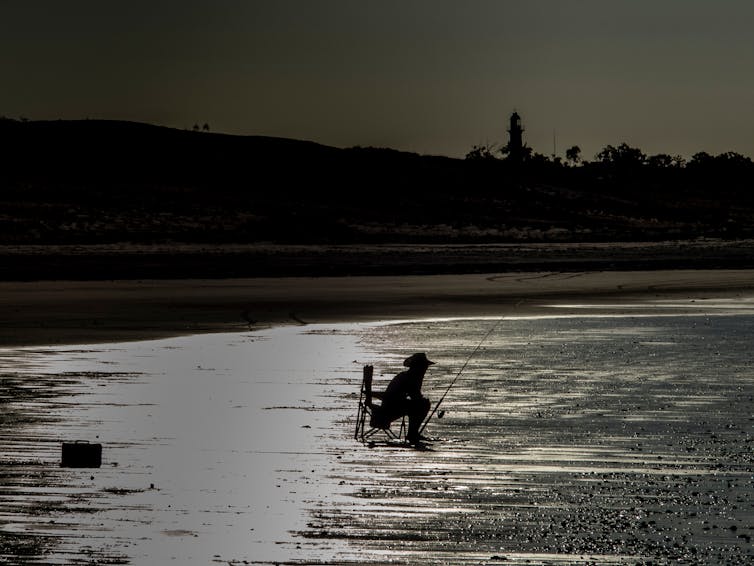
Scientific Rigour
Protected areas in marine parks must be sized, spaced and positioned to allow “population connectivity” – the dispersal of eggs, larvae, juveniles and adults through the area.
My involvement in the marine park design included participating in a study which led to recommendations for how best to achieve this connectivity.
The study was part of a bigger program to improve and integrate ecological and social science knowledge in this region. This information was incorporated into two-way learning and planning, which fed into the proposed marine park.
Proven On-Ground Success
Key to the success of the new marine parks will be the practical capacity of Traditional Owners and Rangers. Indigenous sea ranger groups in the region have already shown they can work with both traditional governance and knowledge structures and non-Indigenous Australian organisations.
What’s more, the Bardi Jawi, Dambeemangarddee and Mayala people have their own healthy country plans. These plans clearly document how they have looked after country for millennia and want to continue this in future.
The Bardi Jawi and Dambeemanagrdee people have also established an Indigenous Protected Area which they’ve successfully cared for since 2013.
Healthy Country, Healthy People
Some recreational fishers believe the proposed exclusions are unreasonable. But there is growing evidence fish populations benefit from sanctuary networks. And many local fishers recognise the increasing threats to the region and welcome Traditional Owners playing a larger management role.
It’s hoped the final marine parks plan will find the right balance between the needs of Traditional Owners, commercial and recreational fishing, pearling and other uses.
By involving traditional custodians from the start, there’s every chance we will realise the ancient Indigenous idea that healthy Country means healthy people – and that will benefit everyone.
The author would like to acknowledge the Bardi Jawi, Mayala and Dambeemangarddee Traditional Owners and their continuing culture, knowledge, beliefs and spiritual connection to Country. The author recognises they are Australia’s first scientists.![]()
Jim Underwood, Research Fellow and Indigenous Partnerships, Australian Institute of Marine Science
This article is republished from The Conversation under a Creative Commons license. Read the original article.
The sunlight that powers solar panels also damages them. ‘Gallium doping’ is providing a solution
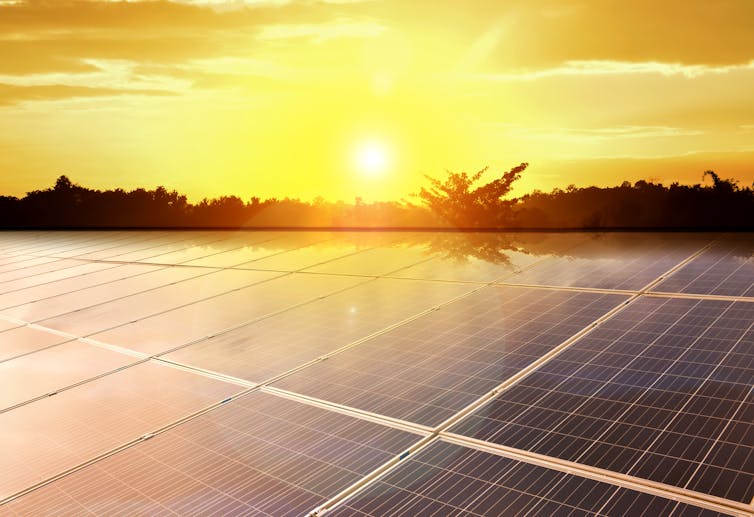
Solar power is already the cheapest form of electricity generation, and its cost will continue to fall as more improvements emerge in the technology and its global production. Now, new research is exploring what could be another major turning point in solar cell manufacturing.
In Australia, more than two million rooftops have solar panels (the most per capita in the world). The main material used in panels is silicon. Silicon makes up most of an individual solar cell’s components required to convert sunlight into power. But some other elements are also required.
Research from our group at the University of New South Wales’s School of Photovoltaics and Renewable Energy Engineering shows that adding gallium to the cell’s silicon can lead to very stable solar panels which are much less susceptible to degrading over their lifetime.
This is the long-term goal for the next generation of solar panels: for them to produce more power over their lifespan, which means the electricity produced by the system will be cheaper in the long run.
As gallium is used more and more to achieve this, our findings provide robust data that could allow manufacturers to make decisions that will ultimately have a global impact.
The Process Of ‘Doping’ Solar Cells
A solar cell converts sunlight into electricity by using the energy from sunlight to “break away” negative charges, or electrons, in the silicon. The electrons are then collected as electricity.
However, shining light on a plain piece of silicon doesn’t generate electricity, as the electrons that are released from the light do not all flow in the same direction. To make the electricity flow in one direction, we need to create an electric field.
Read more: Curious Kids: how do solar panels work?
In silicon solar cells — the kind currently producing power for millions of Australian homes — this is done by adding different impurity atoms to the silicon, to create a region that has more negative charges than normal silicon (n-type silicon) and a region that has fewer negative charges (p-type silicon).
When we put the two parts of silicon together, we form what is called a “p-n junction”. This allows the solar cell to operate. And the adding of impurity atoms into silicon is called “doping”.
An Unfortunate Side Effect Of Sunlight
The most commonly used atom to form the p-type part of the silicon, with less negative charge than plain silicon, is boron.
Boron is a great atom to use as it has the exact number of electrons needed for the task. It can also be distributed very uniformly through the silicon during the production of the high-purity crystals required for solar cells.
But in a cruel twist, shining light on boron-filled silicon can make the quality of the silicon degrade. This is often referred to as “light-induced degradation” and has been a hot topic in solar research over the past decade.
The reason for this degradation is relatively well understood: when we make the pure silicon material, we have to purposefully add some impurities such as boron to generate the electric field that drives the electricity. However, other unwanted atoms are also incorporated into the silicon as a result.
One of these atoms is oxygen, which is incorporated into the silicon from the crucible — the big hot pot in which the silicon is refined.
When light shines on silicon that contains both boron and oxygen, they bond together, causing a defect that can trap electricity and reduce the amount of power generated by the solar panel.
Unfortunately, this means the sunlight that powers solar panels also damages them over their lifetime. An element called gallium looks like it could be the solution to this problem.
A Smarter Approach
Boron isn’t the only element we can use to make p-type silicon. A quick perusal of the periodic table shows a whole column of elements that have one less negative charge than silicon.
Adding one of these atoms to silicon upsets the balance between the negative and positive charge, which is needed to make our electric field. Of these atoms, the most suitable is gallium.
Gallium is a very suitable element to make p-type silicon. In fact, multiple studies have shown it doesn’t bond together with oxygen to cause degradation. So, you may be wondering, why we haven’t been using gallium all along?
Well, the reason we have been stuck using boron instead of gallium over the past 20 years is that the process of doping silicon with gallium was locked under a patent. This prevented manufacturers using this approach.
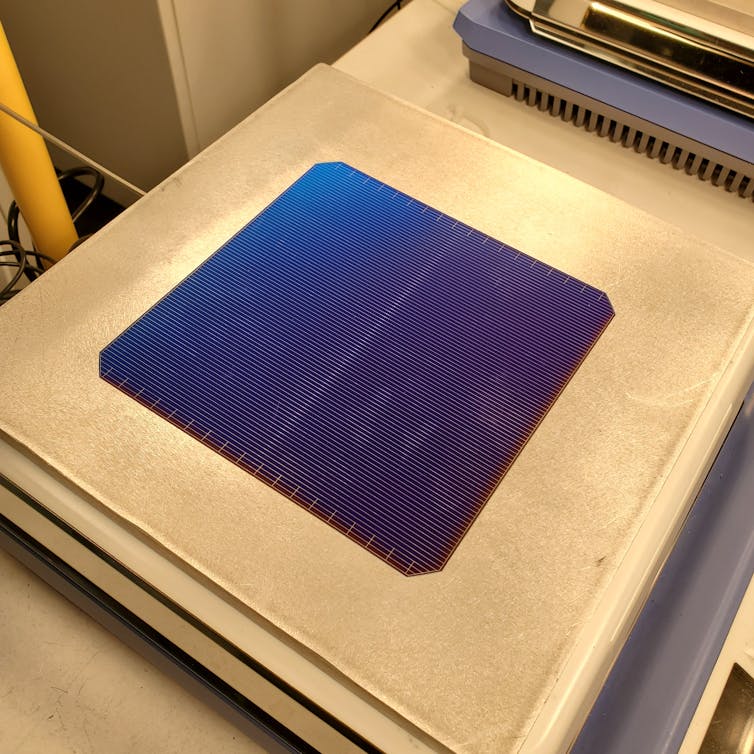
But these patents finally expired in May 2020. Since then, the industry has rapidly shifted from boron to gallium to make p-type silicon.
In fact, at the start of 2021, leading photovoltaic manufacturer Hanwha Q Cells estimated about 80% of all solar panels manufactured in 2021 used gallium doping rather than boron — a massive transition in such a short time!
Does Gallium Really Boost Solar Panel Stability?
We investigated whether solar cells made with gallium-doped silicon really are more stable than solar cells made with boron-doped silicon.
To find out, we made solar cells using a “silicon heterojunction” design, which is the approach that has led to the highest efficiency silicon solar cells to date. This work was done in collaboration with Hevel Solar in Russia.
We measured the voltage of both boron-doped and gallium-doped solar cells during a light-soaking test for 300,000 seconds. The boron-doped solar cell underwent significant degradation due to the boron bonding with oxygen.
Meanwhile, the gallium-doped solar cell had a much higher voltage. Our result also demonstrated that p-type silicon made using gallium is very stable and could help unlock savings for this type of solar cell.
To think it might be possible for manufacturers to work at scale with gallium, producing solar cells that are both more stable and potentially cheaper, is a hugely exciting prospect.
The best part is our findings could have a direct impact on industry. And cheaper solar electricity for our homes means a brighter future for our planet, too.
Read more: It might sound 'batshit insane' but Australia could soon export sunshine to Asia via a 3,800km cable ![]()
Matthew Wright, Postdoctoral Researcher in Photovoltaic Engineering, UNSW; Brett Hallam, Scientia and DECRA Fellow, UNSW, and Bruno Vicari Stefani, PhD Candidate, UNSW
This article is republished from The Conversation under a Creative Commons license. Read the original article.
We’ve discovered an undersea volcano near Christmas Island that looks like the Eye of Sauron
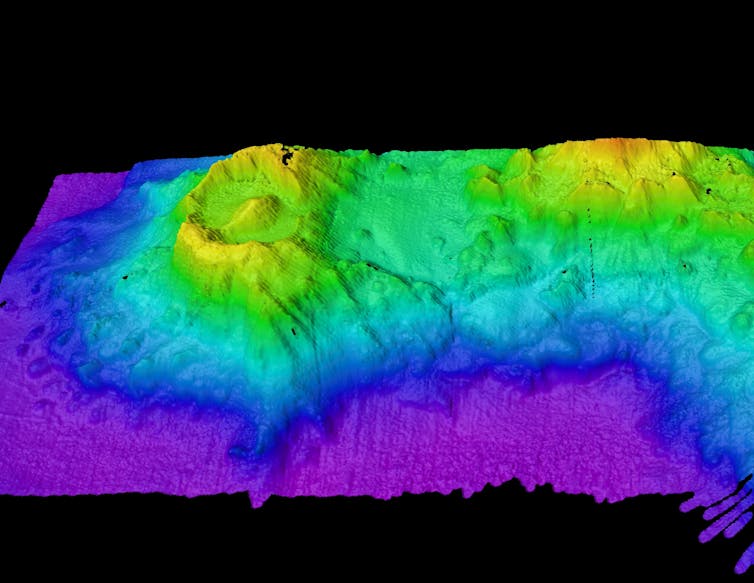
Looking like the Eye of Sauron from the Lord of the Rings Trilogy, an ancient undersea volcano was slowly revealed by multibeam sonar 3,100 metres below our vessel, 280 kilometres southeast of Christmas Island. This was on day 12 of our voyage of exploration to Australia’s Indian Ocean Territories, aboard CSIRO’s dedicated ocean research vessel, the RV Investigator.
Previously unknown and unimagined, this volcano emerged from our screens as a giant oval-shaped depression called a caldera, 6.2km by 4.8km across. It is surrounded by a 300m-high rim (resembling Sauron’s eyelids), and has a 300 m high cone-shaped peak at its the centre (the “pupil”).
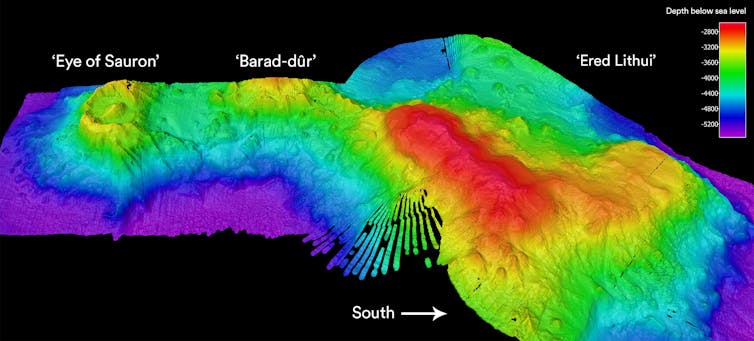
A caldera is formed when a volcano collapses. The molten magma at the base of the volcano shifts upwards, leaving empty chambers. The thin solid crust on the surface of the dome then collapses, creating a large crater-like structure. Often, a small new peak then begins to form in the centre as the volcano continues spewing magma.
One well-known caldera is the one at Krakatoa in Indonesia, which exploded in 1883, killing tens of thousands of people and leaving only bits of the mountain rim visible above the waves. By 1927, a small volcano, Anak Krakatoa (“child of Krakatoa”), had grown in its centre.
Read more: Krakatoa is still active, and we are not ready for the tsunamis another eruption would generate
In contrast, we may not even be aware of volcanic eruptions when they happen deep under the ocean. One of the few tell-tale signs is the presence of rafts of light pumice stone floating on the sea surface after being blown out of a submarine volcano. Eventually, this pumice stone becomes waterlogged and sinks to the ocean floor.
Our volcanic “eye” was not alone. Further mapping to the south revealed a smaller sea mountain covered in numerous volcanic cones, and further still to the south was a larger, flat-topped seamount. Following our Lord of the Rings theme, we have nicknamed them Barad-dûr (“Dark Fortress”) and Ered Lithui (“Ash Mountains”), respectively.
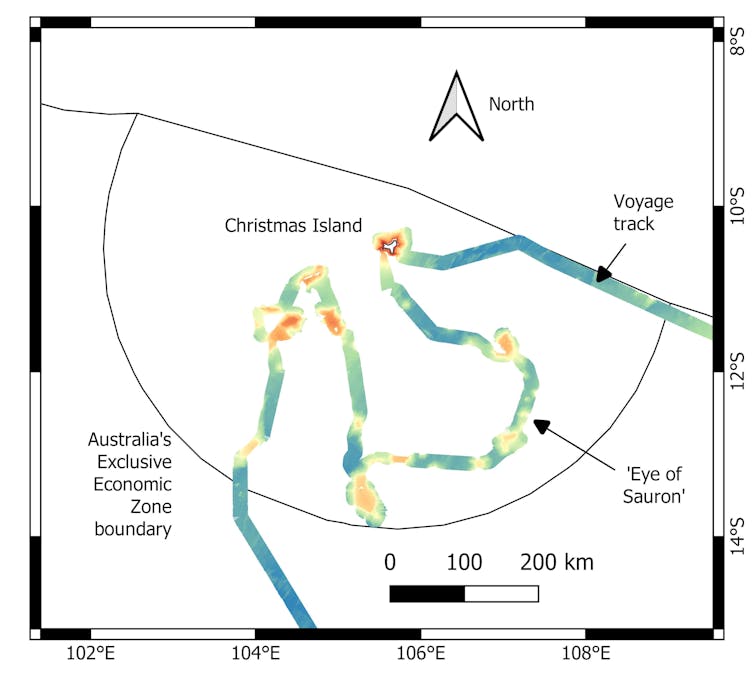
Although author J.R.R. Tolkein’s knowledge of mountain geology wasn’t perfect, our names are wonderfully appropriate given the jagged nature of the first and the pumice-covered surface of the second.
The Eye of Sauron, Barad-dûr, and Ered Lithui are part of the Karma cluster of seamounts that have been previously estimated by geologists to be more than 100 million years old, and which formed next to an ancient sea ridge from a time when Australia was situated much further south, near Antarctica. The flat summit of Ered Lithui was formed by wave erosion when the seamount protruded above the sea surface, before the heavy seamount slowly sank back down into the soft ocean seafloor. The summit of Ered Lithui is now 2.6km below sea level.

But here is the geological conundrum. Our caldera looks surprisingly fresh for a structure that should be more than 100 million years old. Ered Lithui has almost 100m of sand and mud layers draped over its summit, formed by sinking dead organisms over millions of years. This sedimentation rate would have partially smothered the caldera. Instead it is possible that volcanoes have continued to sprout or new ones formed long after the original foundation. Our restless Earth is never still.
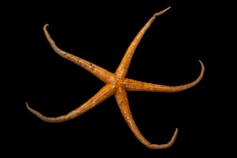
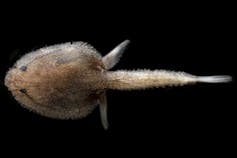
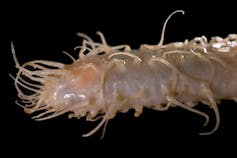
But life adapts to these geological changes, and Ered Lithui is now covered in seafloor animals. Brittle-stars, sea-stars, crabs and worms burrow into or skate over the sandy surface. Erect black corals, fan-corals, sea-whips, sponges and barnacles grow on exposed rocks. Gelatinous cusk-eels prowl around rock gullies and boulders. Batfish lie in wait for unsuspecting prey.
Our mission is to map the seafloor and survey sea life from these ancient and secluded seascapes. The Australian government recently announced plans to create two massive marine parks across the regions. Our expedition will supply scientific data that will help Parks Australia to manage these areas into the future.
Scientists from museums, universities, CSIRO and Bush Blitz around Australia are participating in the voyage. We are close to completing part one of our journey to the Christmas Island region. Part two of our journey to the Cocos (Keeling) Island region will be scheduled in the next year or so.
No doubt many animals that we find here will be new to science and our first records of their existence will be from this region. We expect many more surprising discoveries.
Tim O'Hara, Senior Curator of Marine Invertebrates, Museums Victoria
This article is republished from The Conversation under a Creative Commons license. Read the original article.
World Heritage Committee Deletes Liverpool - Maritime Mercantile City From UNESCO’s World Heritage List
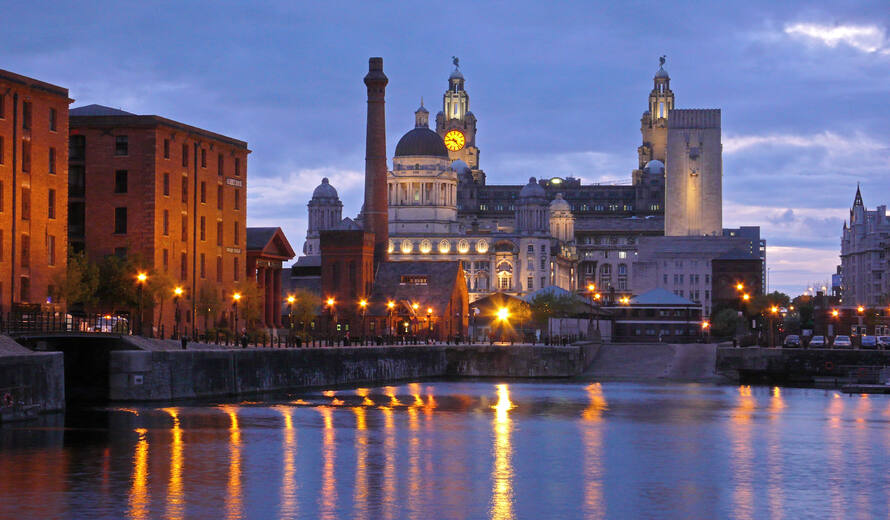
When coral dies, tiny invertebrates boom. This could dramatically change the food web on the Great Barrier Reef
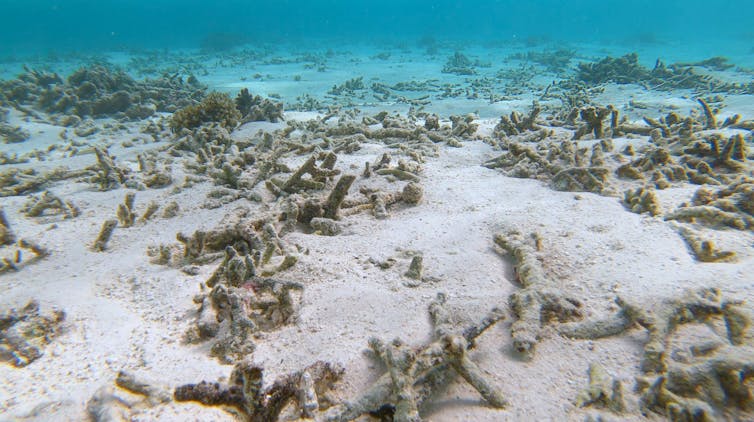
This week, international ambassadors will take a snorkelling trip to the Great Barrier Reef as part of the Australian government’s efforts to stop the reef getting on the world heritage “in danger” list.
The World Heritage Centre of UNESCO is set to make its final decision on whether to officially brand the reef as “in danger” later this month.
To many coral reef researchers like myself, who have witnessed firsthand the increasing coral bleaching and cyclone-driven destruction of this global icon, an in-danger listing comes as no surprise.
But the implications of mass coral death are complex — just because coral is dying doesn’t mean marine life there will end. Instead, it will change.
In recent research, my colleagues and I discovered dead coral hosted 100 times more microscopic invertebrates than healthy coral. This means up to 100 times more fish food is available on reefs dominated by dead coral compared with live, healthy coral.
This is a near-invisible consequence of coral death, with dramatic implications for reef food webs.
When Coral Dies
Tiny, mobile invertebrates — between 0.125 and 4 millimetres in size — are ubiquitous inhabitants of the surfaces of all reef structures and are the main food source for approximately 70% of fish species on the Great Barrier Reef.
These invertebrates, most visible only under a microscope, are commonly known as “epifauna” and include species of crustaceans, molluscs, and polychaete worms.
When corals die, their skeletons are quickly overgrown by fine, thread-like “turfing algae”. Turf-covered coral skeletons then break down into beds of rubble.
We wanted to find out how the tiny epifaunal invertebrates — upon which many fish depend - might respond to the widespread replacement of live healthy coral with dead, turf-covered coral.
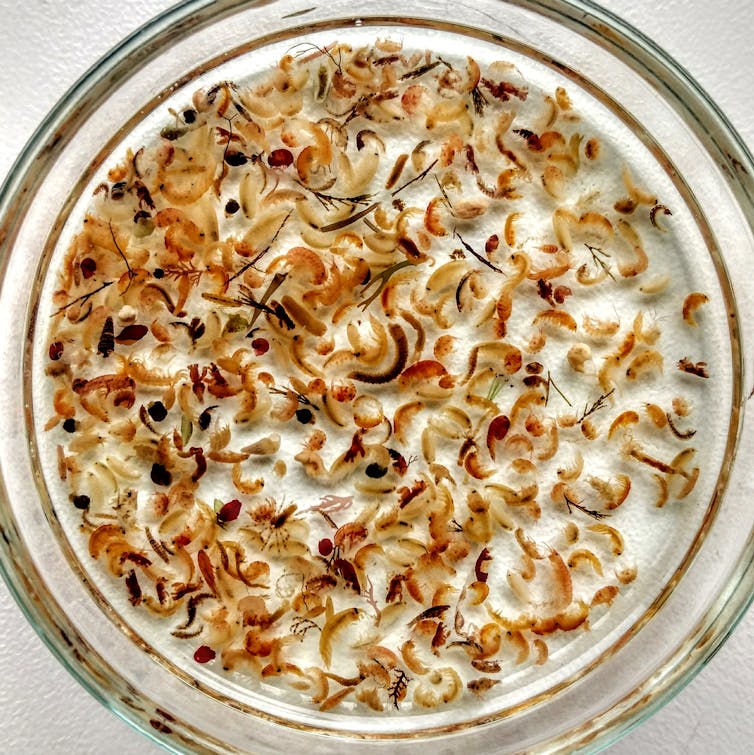
I took my SCUBA gear and a box of lab equipment, and dived into a series of reefs across eastern Australia, from the Solitary Islands in New South Wales to Lizard Island on the northern Great Barrier Reef.
Underwater, I carefully gathered into sandwich bags the tiny invertebrates living on various species of live coral and those living on dead, turf-covered coral.
But things really got interesting back in the laboratory under the microscope. I sorted each sandwich bag sample of epifauna into sizes, identified them as best I could (many, if not most, species remain unknown to science), and counted them.
I quickly noticed samples taken from live coral took just minutes to count, whereas samples from dead coral could take hours. There were exponentially more animals in the dead coral samples.
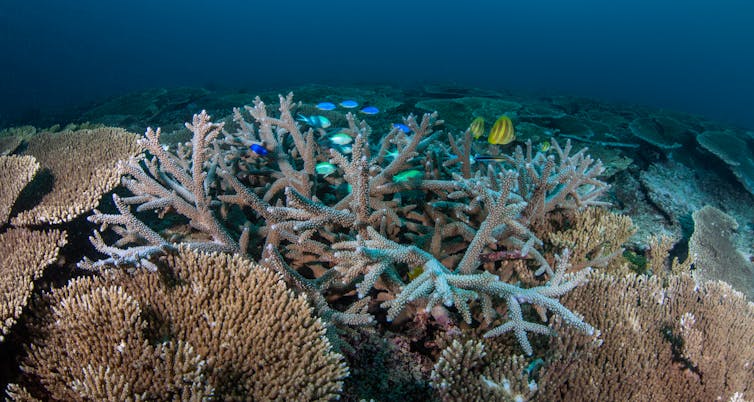
Why Do They Prefer Dead Coral?
Counting individual invertebrates is only so useful when considering their contribution to the food web. So we instead used the much more useful metric of “productivity”, which looks at how much weight (biomass) of organisms is produced daily for a given area of reef.
We found epifaunal productivity was far greater on dead, turf-covered coral. The main contributors were the tiniest epifauna — thousands of harpacticoid copepods (a type of crustacean) an eighth of a millimetre in size.
In contrast, coral crabs and glass shrimp contributed the most productivity to epifaunal communities on live coral. At one millimetre and larger, these animals are relative giants in the epifaunal world, with fewer than ten individuals in most live coral samples.

These striking differences may be explained by two things.
First: shelter. Live coral may look complex to the naked eye, but if you zoom in you’ll find turfing algae has more structural complexity that tiny epifauna can hide in, protecting them from predators.
A coral head is actually a community of individual coral polyps, each with a tiny mouth and fine tentacles to trap prey. To smaller epifauna, such as harpacticoid copepods, the surface of live coral is a wall of mouths and a very undesirable habitat.
Second: food. Many epifauna, regardless of size, are herbivores (plant-eaters) or detritivores (organic waste-eaters). Turfing algae is a brilliant trap for fine detritus and an excellent substrate for growing films of even smaller microscopic algae.
This means dead coral overgrown by turfing algae represents a smorgasbord of food options for the tiniest epifauna through to the largest.
Meanwhile, many larger epifauna like coral crabs have evolved to live exclusively on live coral, eating the mucus that covers the polyps or particles trapped by the polyps themselves.
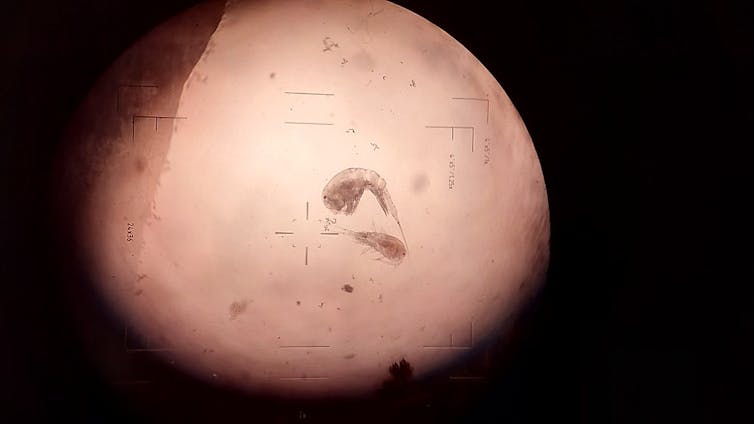
What This Means For Life On The Reef?
As corals reefs continue to decline, we can expect increased productivity at the base level of reef food webs, with a shift from larger crabs and shrimp to small harpacticoid copepods.
This will affect the flow of food and energy throughout reef food webs, markedly changing the structure of fish and other animal communities. The abundance of animals that eat invertebrates will likely boom with increased coral death.
We might expect higher numbers of fish such as wrasses, cardinalfish, triggerfish, and dragonets, with species preferring the smallest epifauna most likely to flourish.
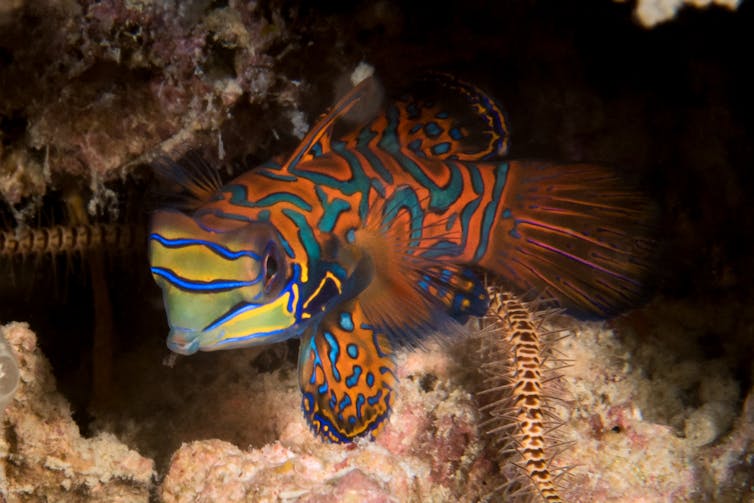
Invertebrate-eating animals are food for a diversity of carnivores on a coral reef, and most fish Australians want to eat are carnivores, such as coral trout, snapper, and Spanish mackerel.
While we didn’t investigate exactly which species are likely to increase following widespread coral death, it’s safe to say populations of fish targeted by recreational and commercial fisheries on Australia’s coral reefs are likely to change as live coral is lost, some for better and some for worse.
Read more: The outlook for coral reefs remains grim unless we cut emissions fast — new research
The Great Barrier Reef is undoubtedly in danger, and it’s important that we make every effort to protect and conserve the remaining live, healthy coral. However, if corals continue to die, there will remain an abundance of life in their absence, albeit very different life from that to which we are accustomed.
As long as there is hard structure for algae to grow on, there will be epifauna. And where there is epifauna, there is food for fish, although perhaps not for all the fish we want to eat.![]()
Kate Fraser, Marine Ecologist, University of Tasmania
This article is republished from The Conversation under a Creative Commons license. Read the original article.
From Ice To Orchestra
NSW State Government's Plans To Open Western NSW To Coal Mining Open For Feedback
- Forty-five recorded Aboriginal heritage sites and an additional 13 sites that are restricted and location data not supplied in the proposed coal release areas.
- Twenty-two threatened fauna species and six threatened flora species including the koala, the critically endangered regent honeyeater and the endangered spotted-tailed quoll, as well as four plant species endemic to the Rylstone/western Wollemi area.
- One thousand, eight hundred and fifty-four hectares of groundwater dependant ecosystems.
- Six thousand, six hundred and thirty-four hectares of potential threatened ecological communities.
- Thirty-six water bores.
- One hundred and twenty kilometres of stream channels in good condition and 118 kilometres of stream channels classed as a high level of fragility.
New Plan To Revitalise NSW's Oldest Park By Installing Mountain Bike Trails
- Royal National Park, Heathcote National Park, Garawarra State Conservation Area Draft Planning Considerations
- Royal National Park, Heathcote National Park and Garawarra State Conservation Area Draft Plan of Management
- Royal National Park, Heathcote National Park and Garawarra State Conservation Area Draft Mountain Biking Plan
Bushcare In Pittwater
Where we work Which day What time
Avalon
Angophora Reserve 3rd Sunday 8:30 - 11:30am
Avalon Dunes 1st Sunday 8:30 - 11:30am
Avalon Golf Course 2nd Wednesday 3 - 5:30pm
Careel Creek 4th Saturday 8:30 - 11:30am
Toongari Reserve 3rd Saturday 9 - 12noon (8 - 11am in summer)
Bangalley Headland 2nd Sunday 9 to 12noon
Bayview
Winnererremy Bay 4th Sunday 9 to 12noon
Bilgola
North Bilgola Beach 3rd Monday 9 - 12noon
Algona Reserve 1st Saturday 9 - 12noon
Plateau Park 1st Friday 8:30 - 11:30am
Church Point
Browns Bay Reserve 1st Tuesday 9 - 12noon
McCarrs Creek Reserve Contact Bushcare Officer To be confirmed
Clareville
Old Wharf Reserve 3rd Saturday 8 - 11am
Elanora
Kundibah Reserve 4th Sunday 8:30 - 11:30am
 Mona Vale
Mona Vale Mona Vale Beach Basin 1st Saturday 8 - 11am
Mona Vale Dunes 2nd Saturday +3rd Thursday 8:30 - 11:30am
Newport
Bungan Beach 4th Sunday 9 - 12noon
Crescent Reserve 3rd Sunday 9 - 12noon
North Newport Beach 4th Saturday 8:30 - 11:30am
Porter Reserve 2nd Saturday 8 - 11am
North Narrabeen
Irrawong Reserve 2nd Saturday 2 - 5pm
Palm Beach
North Palm Beach Dunes 3rd Saturday 9 - 12noon
Scotland Island
Catherine Park 2nd Sunday 10 - 12:30pm
Elizabeth Park 1st Saturday 9 - 12noon
Pathilda Reserve 3rd Saturday 9 - 12noon
Warriewood
Warriewood Wetlands 1st Sunday 8:30 - 11:30am
Whale Beach
Norma Park 1st Friday 9 - 12noon
Western Foreshores
Coopers Point, Elvina Bay 2nd Sunday 10 - 1pm
Rocky Point, Elvina Bay 1st Monday 9 - 12noon
Gardens And Environment Groups And Organisations In Pittwater
Avalon Golf Course Bushcare Needs You
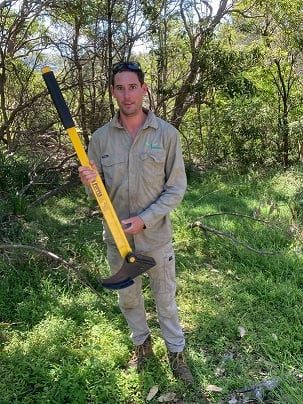
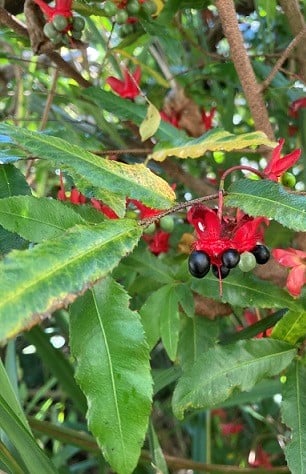
Pittwater Reserves

New Shorebirds WingThing For Youngsters Available To Download
A Shorebirds WingThing educational brochure for kids (A5) helps children learn about shorebirds, their life and journey. The 2021 revised brochure version was published in February 2021 and is available now. You can download a file copy here.
If you would like a free print copy of this brochure, please send a self-addressed envelope with A$1.10 postage (or larger if you would like it unfolded) affixed to: BirdLife Australia, Shorebird WingThing Request, 2-05Shorebird WingThing/60 Leicester St, Carlton VIC 3053.

 Shorebird Identification Booklet
Shorebird Identification Booklet
The Migratory Shorebird Program has just released the third edition of its hugely popular Shorebird Identification Booklet. The team has thoroughly revised and updated this pocket-sized companion for all shorebird counters and interested birders, with lots of useful information on our most common shorebirds, key identification features, sighting distribution maps and short articles on some of BirdLife’s shorebird activities.
The booklet can be downloaded here in PDF file format: http://www.birdlife.org.au/documents/Shorebird_ID_Booklet_V3.pdf
Paper copies can be ordered as well, see http://www.birdlife.org.au/projects/shorebirds-2020/counter-resources for details.
Download BirdLife Australia's children’s education kit to help them learn more about our wading birdlife
Shorebirds are a group of wading birds that can be found feeding on swamps, tidal mudflats, estuaries, beaches and open country. For many people, shorebirds are just those brown birds feeding a long way out on the mud but they are actually a remarkably diverse collection of birds including stilts, sandpipers, snipe, curlews, godwits, plovers and oystercatchers. Each species is superbly adapted to suit its preferred habitat. The Red-necked Stint is as small as a sparrow, with relatively short legs and bill that it pecks food from the surface of the mud with, whereas the Eastern Curlew is over two feet long with a exceptionally long legs and a massively curved beak that it thrusts deep down into the mud to pull out crabs, worms and other creatures hidden below the surface.
Some shorebirds are fairly drab in plumage, especially when they are visiting Australia in their non-breeding season, but when they migrate to their Arctic nesting grounds, they develop a vibrant flush of bright colours to attract a mate. We have 37 types of shorebirds that annually migrate to Australia on some of the most lengthy and arduous journeys in the animal kingdom, but there are also 18 shorebirds that call Australia home all year round.
What all our shorebirds have in common—be they large or small, seasoned traveller or homebody, brightly coloured or in muted tones—is that each species needs adequate safe areas where they can successfully feed and breed.
The National Shorebird Monitoring Program is managed and supported by BirdLife Australia.
This project is supported by Glenelg Hopkins Catchment Management Authority and Hunter Local Land Services through funding from the Australian Government’s National Landcare Program. Funding from Helen Macpherson Smith Trust and Port Phillip Bay Fund is acknowledged.
The National Shorebird Monitoring Program is made possible with the help of over 1,600 volunteers working in coastal and inland habitats all over Australia.
The National Shorebird Monitoring program (started as the Shorebirds 2020 project initiated to re-invigorate monitoring around Australia) is raising awareness of how incredible shorebirds are, and actively engaging the community to participate in gathering information needed to conserve shorebirds.
In the short term, the destruction of tidal ecosystems will need to be stopped, and our program is designed to strengthen the case for protecting these important habitats.
In the long term, there will be a need to mitigate against the likely effects of climate change on a species that travels across the entire range of latitudes where impacts are likely.
The identification and protection of critical areas for shorebirds will need to continue in order to guard against the potential threats associated with habitats in close proximity to nearly half the human population.
Here in Australia, the place where these birds grow up and spend most of their lives, continued monitoring is necessary to inform the best management practice to maintain shorebird populations.
BirdLife Australia believe that we can help secure a brighter future for these remarkable birds by educating stakeholders, gathering information on how and why shorebird populations are changing, and working to grow the community of people who care about shorebirds.
To find out more visit: http://www.birdlife.org.au/projects/shorebirds-2020/shorebirds-2020-program
Aussie Bread Tags Collection Points

Biodiversity, Climate Change And The Fate Of Coral Reefs: International Group Of Calling For New Commitments And Actions
- Commit to addressing biodiversity loss and the effect climate change has had on coral reefs, ensure policies are ambitious enough to address those crises, and ensure that policies are implemented.
- Build coordinated actions across related policy fields at all levels of governance, from local councils to international bodies. This includes efforts in conservation, management and restoration, as well as policies that address climate change adaptation, biodiversity and sustainable development.
- Innovate new approaches to help coral adapt to climate change. Global warming is here, and adaptation is unavoidable. A small percentage of reefs and some coral species have been successfully managed. "Studies of these 'bright spots' provide important lessons to guide future actions, such as how local community participation can improve management outcomes," the scientists wrote.
No Excuse To Continue Reliance On Fossil Fuels Says Leading Nano-Technologist
How Green Is Your Plastic?
New Evidence Of Menopause In Killer Whales
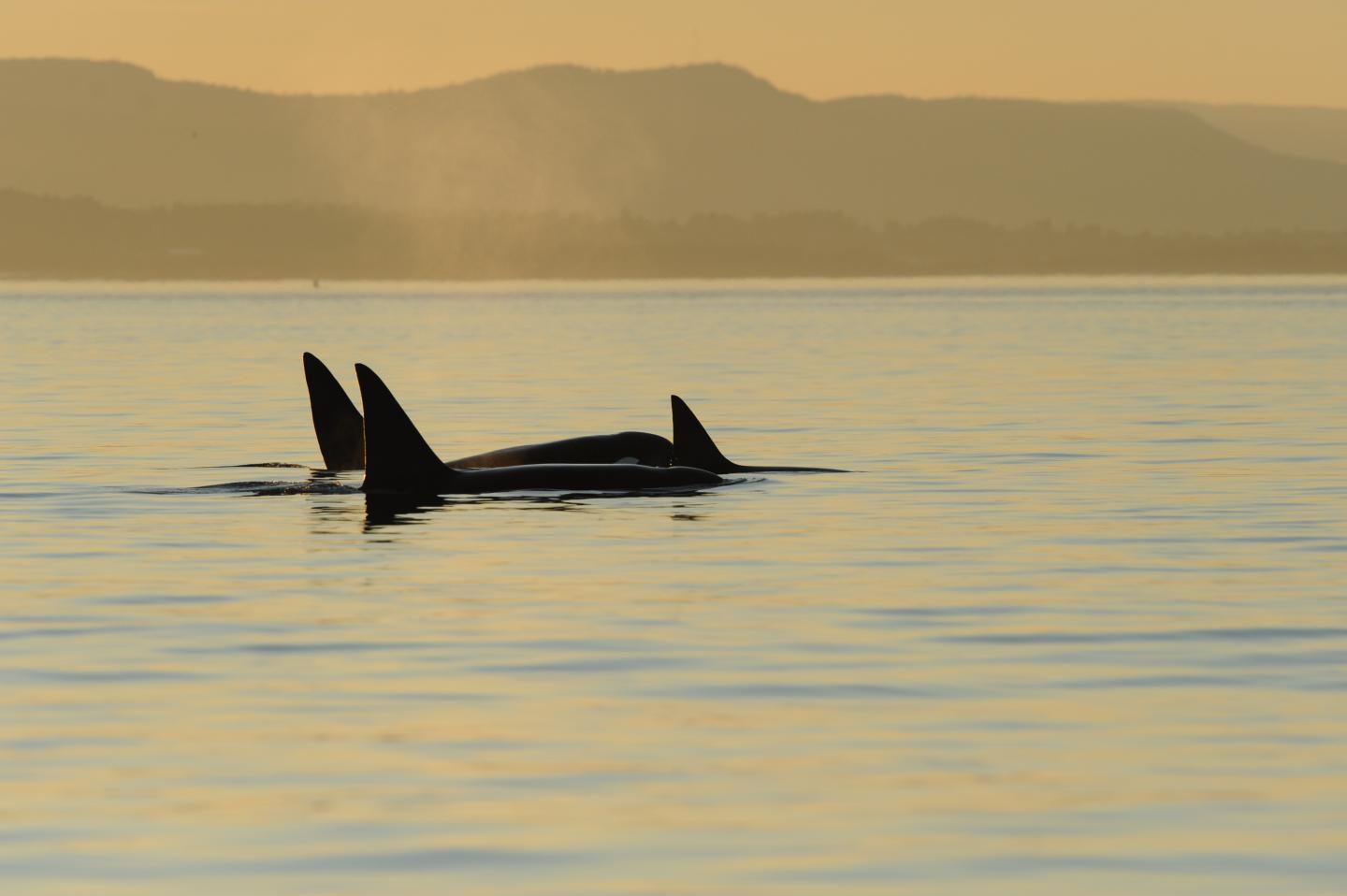
Climate Change Threatens Food Security Of Many Countries Dependent On Fish
Rapidly Diversifying Birds In Southeast Asia Offer New Insights Into Evolution
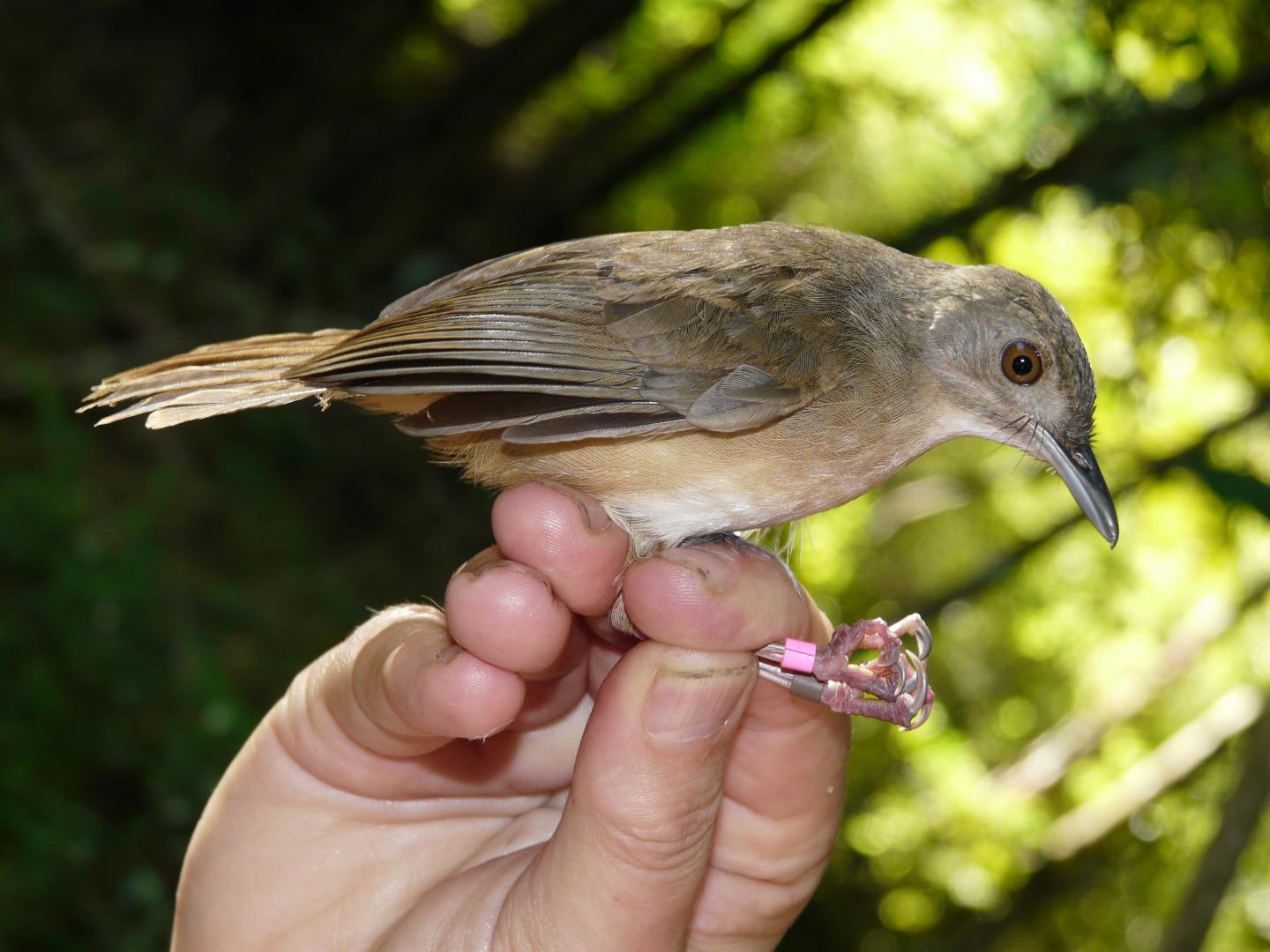
Using Snakes To Monitor Fukushima Radiation
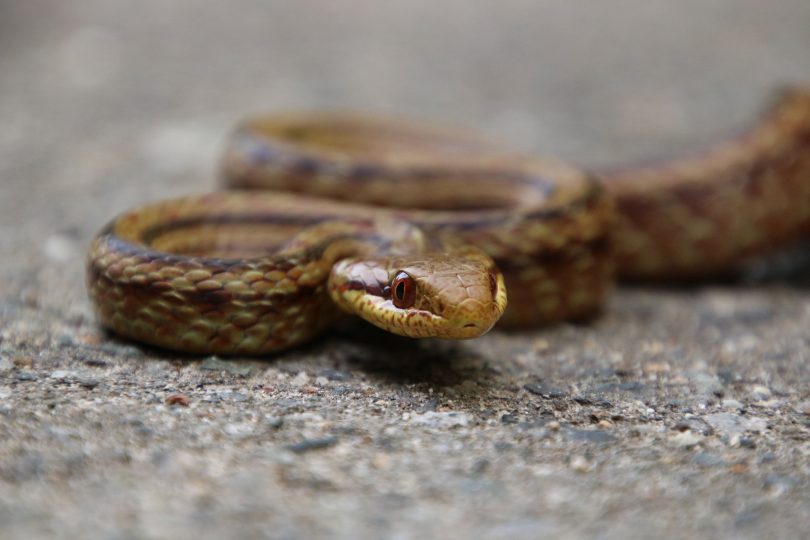
More Buoyant Liquid-Proof Life Jackets And Swimsuits Developed
15,000-Year-Old Viruses Discovered In Tibetan Glacier Ice
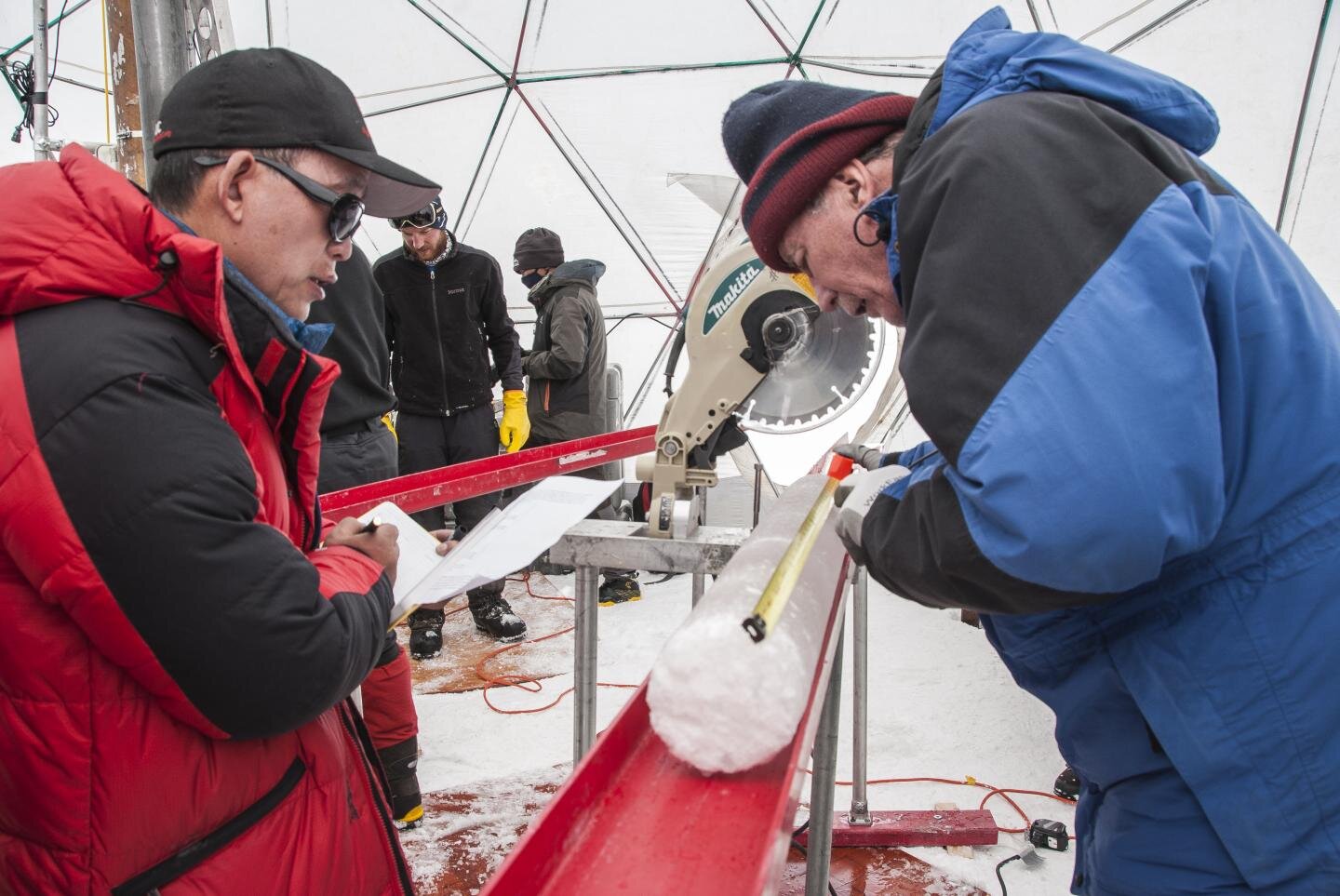
Study Finds The Climate Impact Of Wild Pigs Greater Than A Million Cars
More Than 1.5 Million Children Lost A Primary Or Secondary Caregiver Due To The COVID-19 Pandemic
Repairing Hearts With Deadly Funnel Web Spider Venom: Study
Gold Mining-Related Deforestation In The Amazon
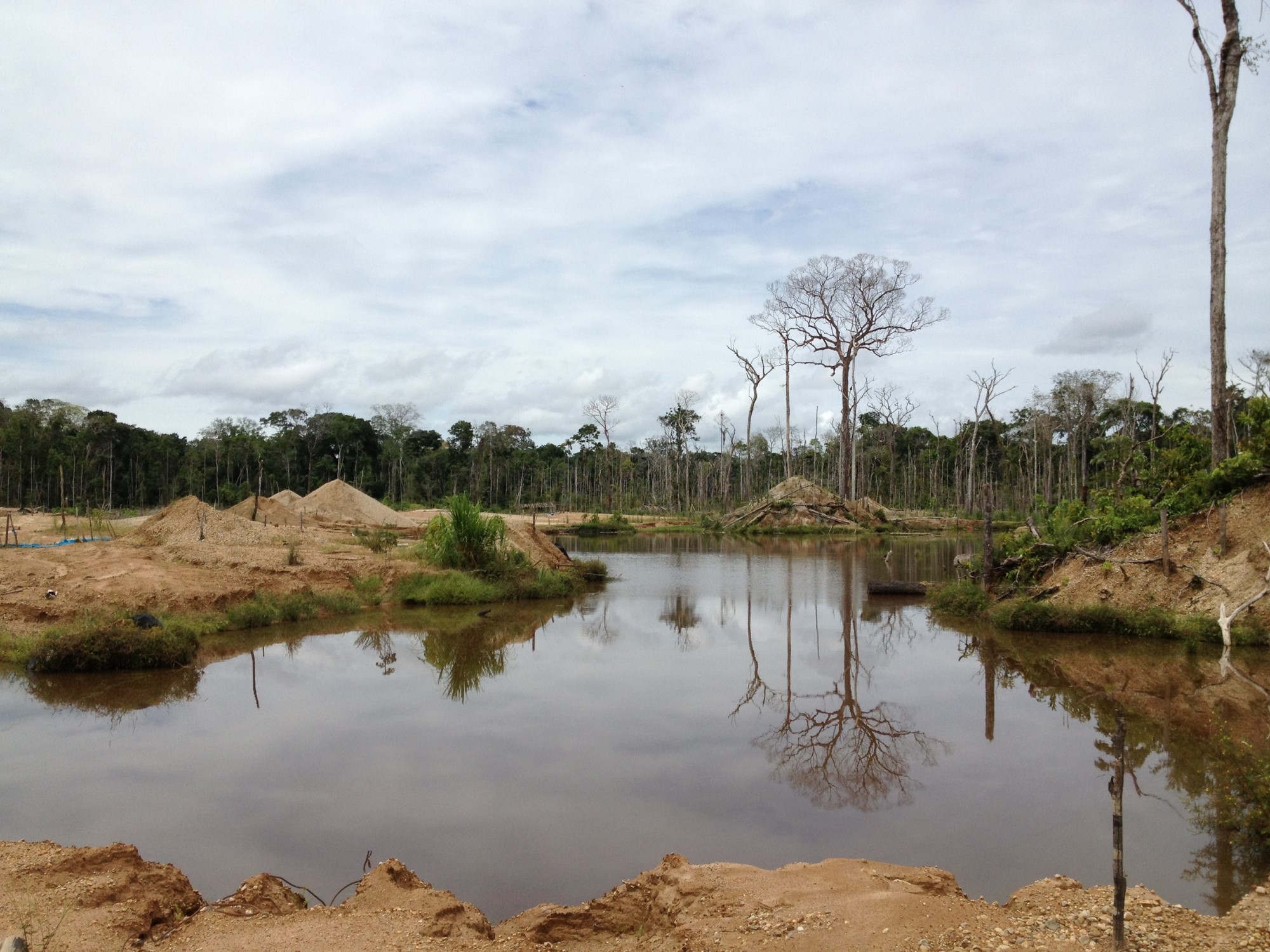
Disclaimer: These articles are not intended to provide medical advice, diagnosis or treatment. Views expressed here do not necessarily reflect those of Pittwater Online News or its staff.